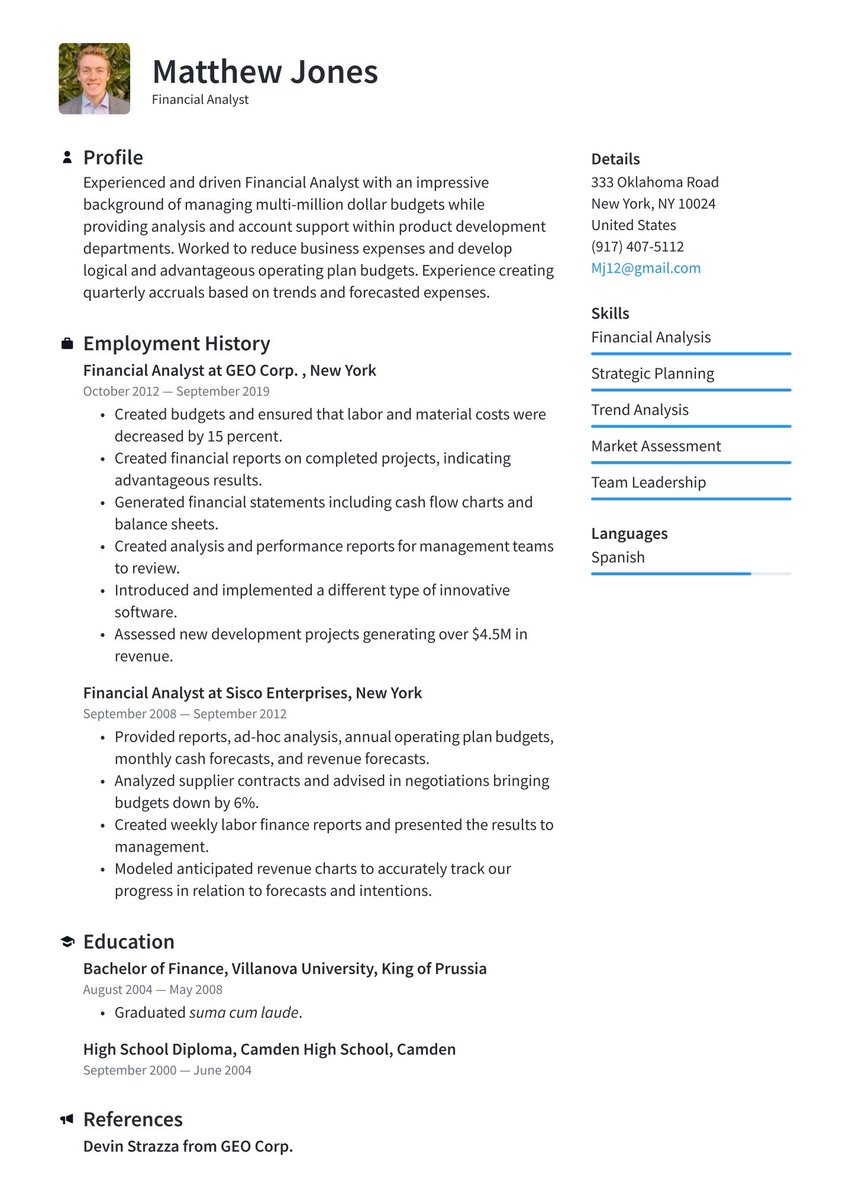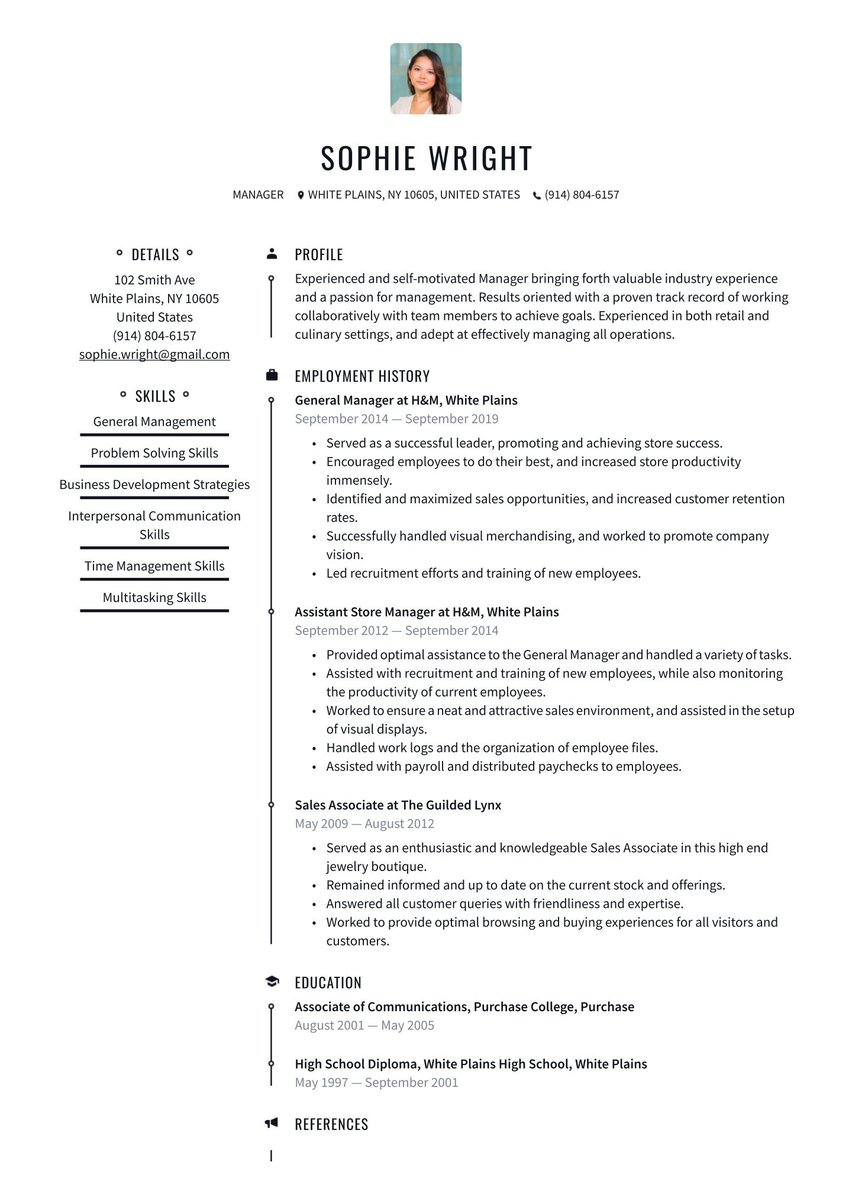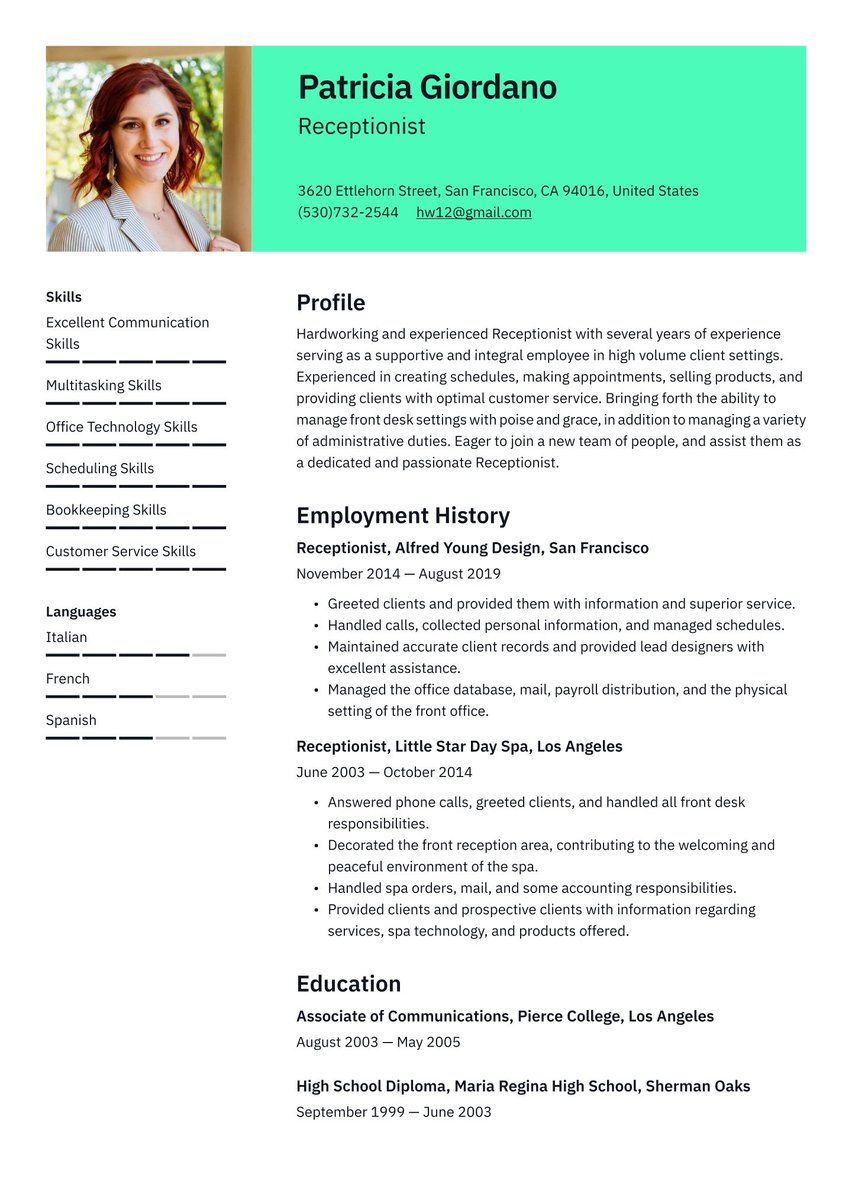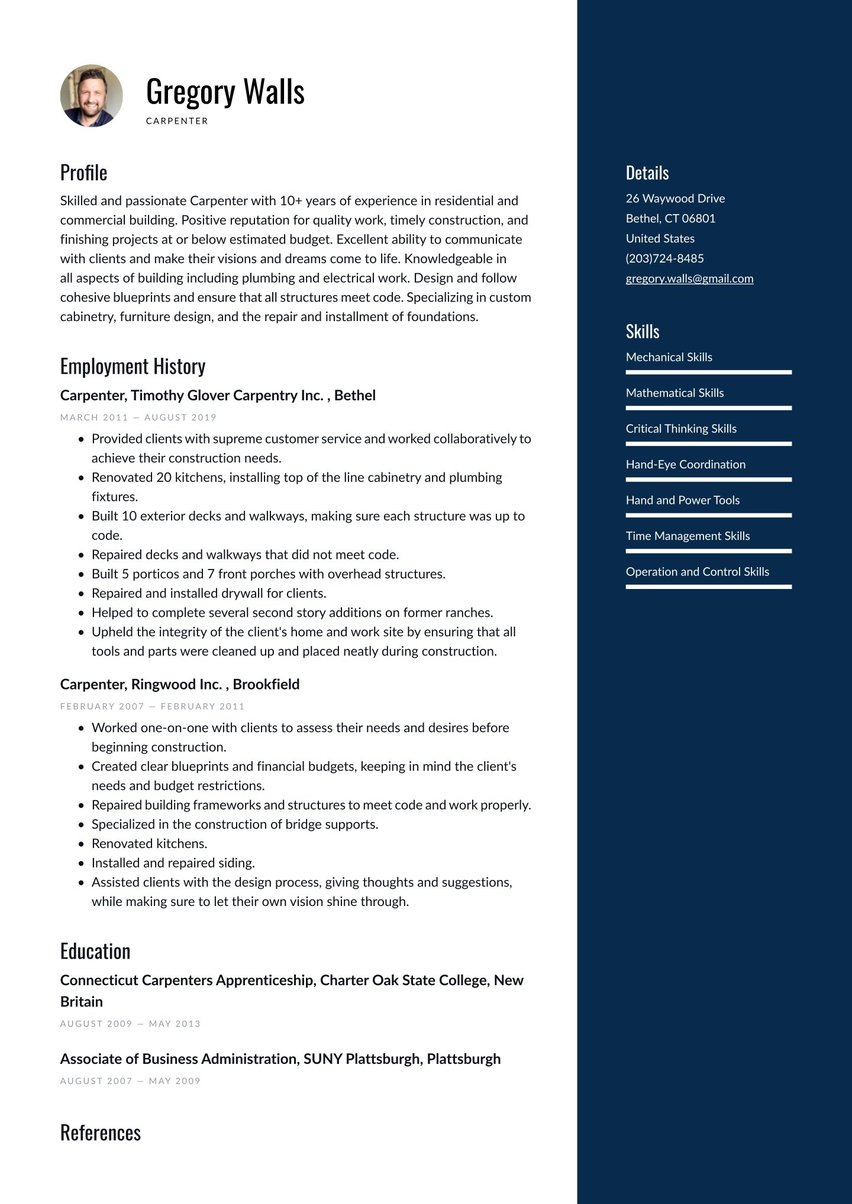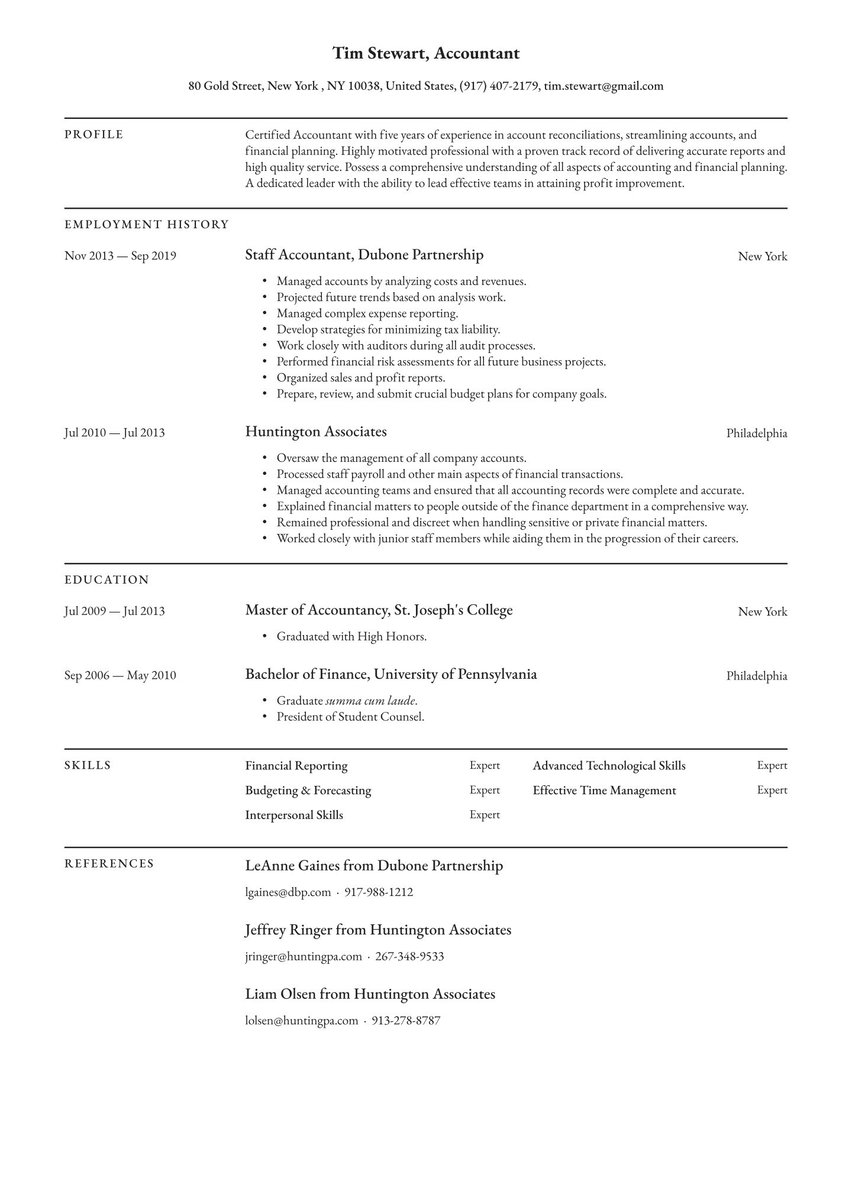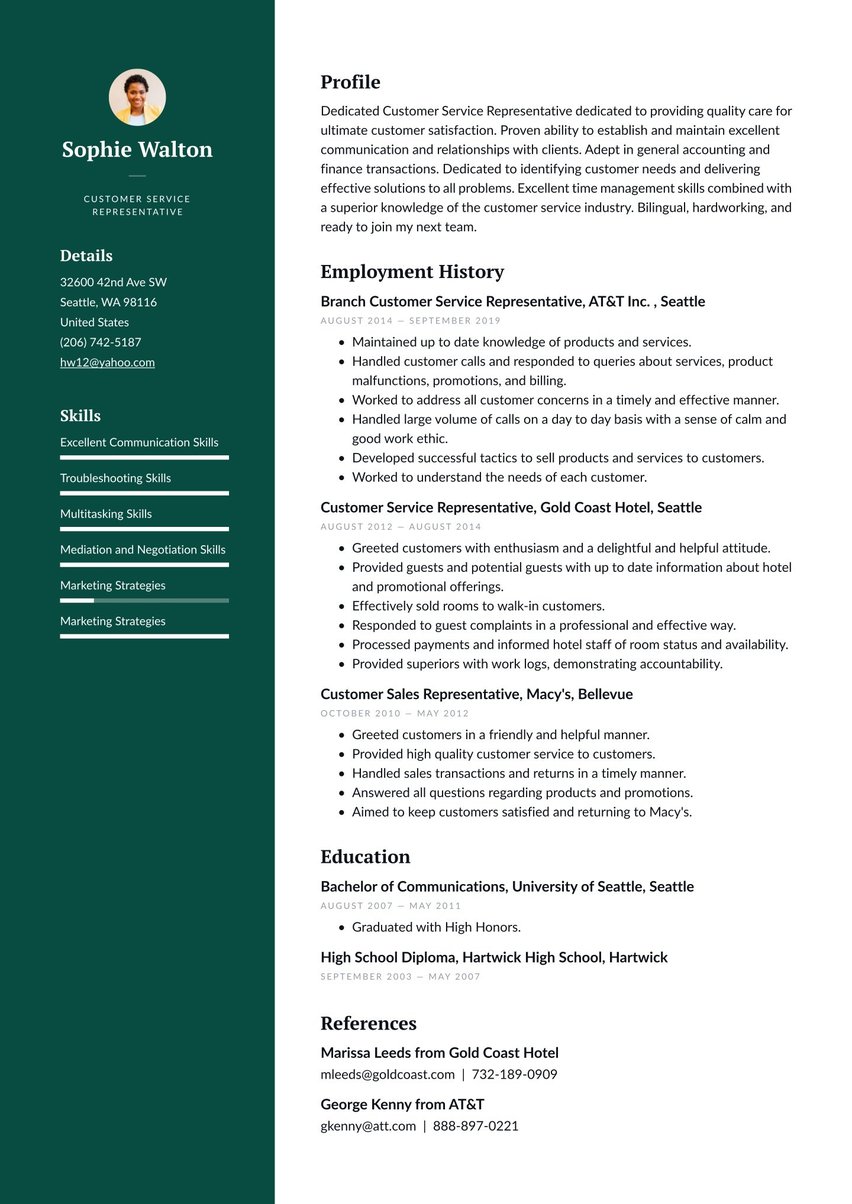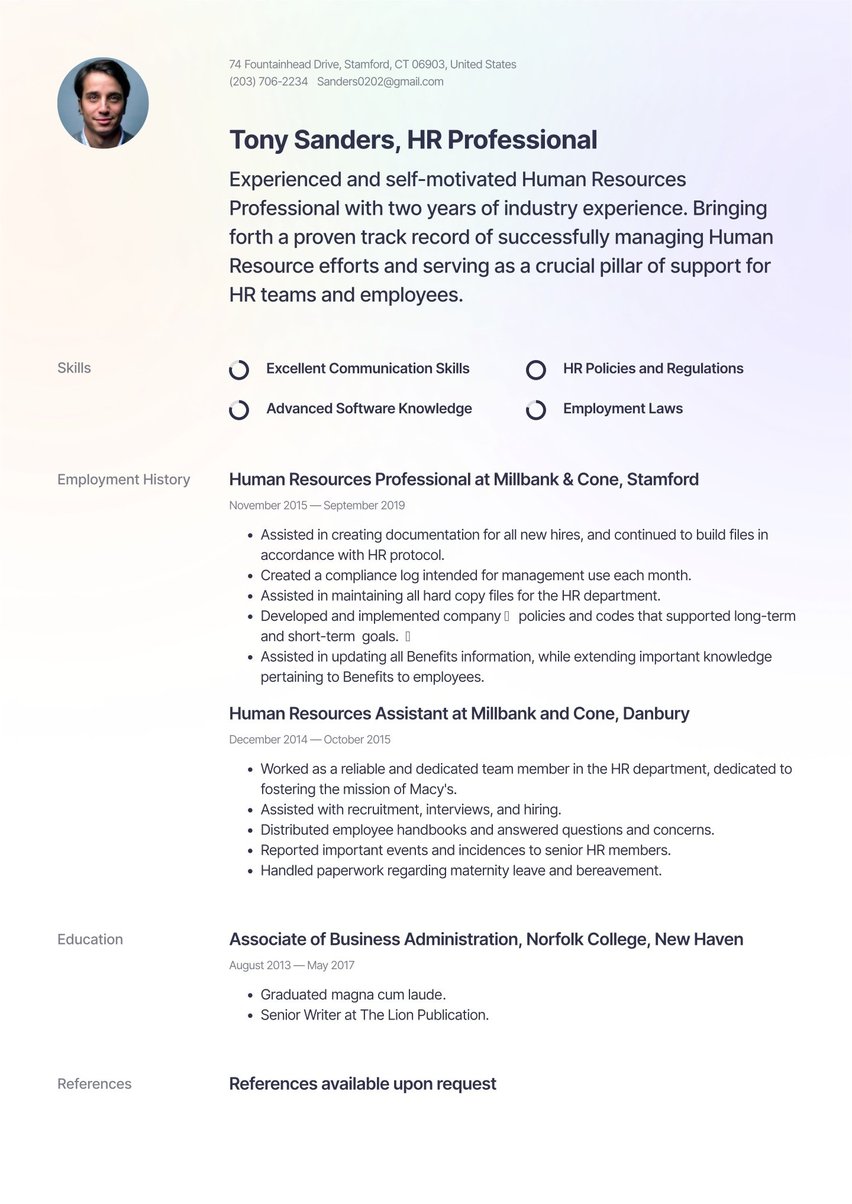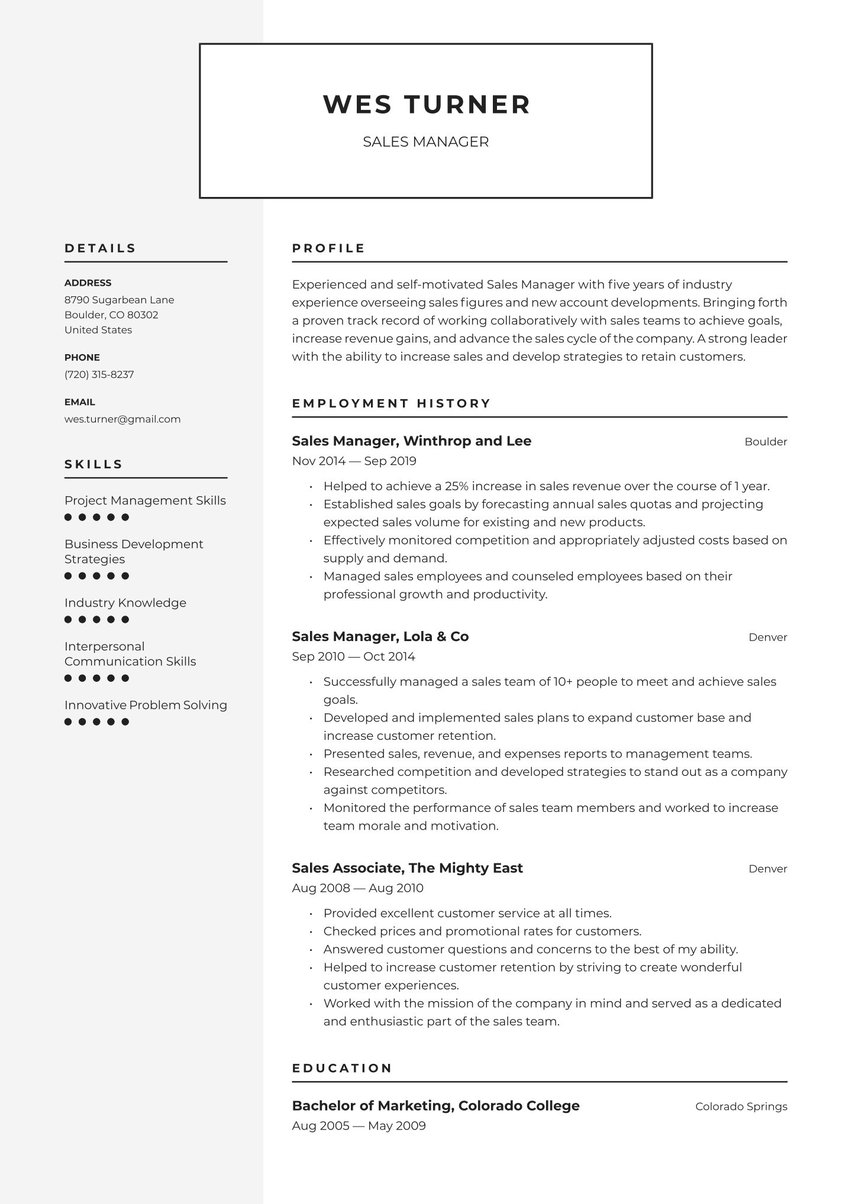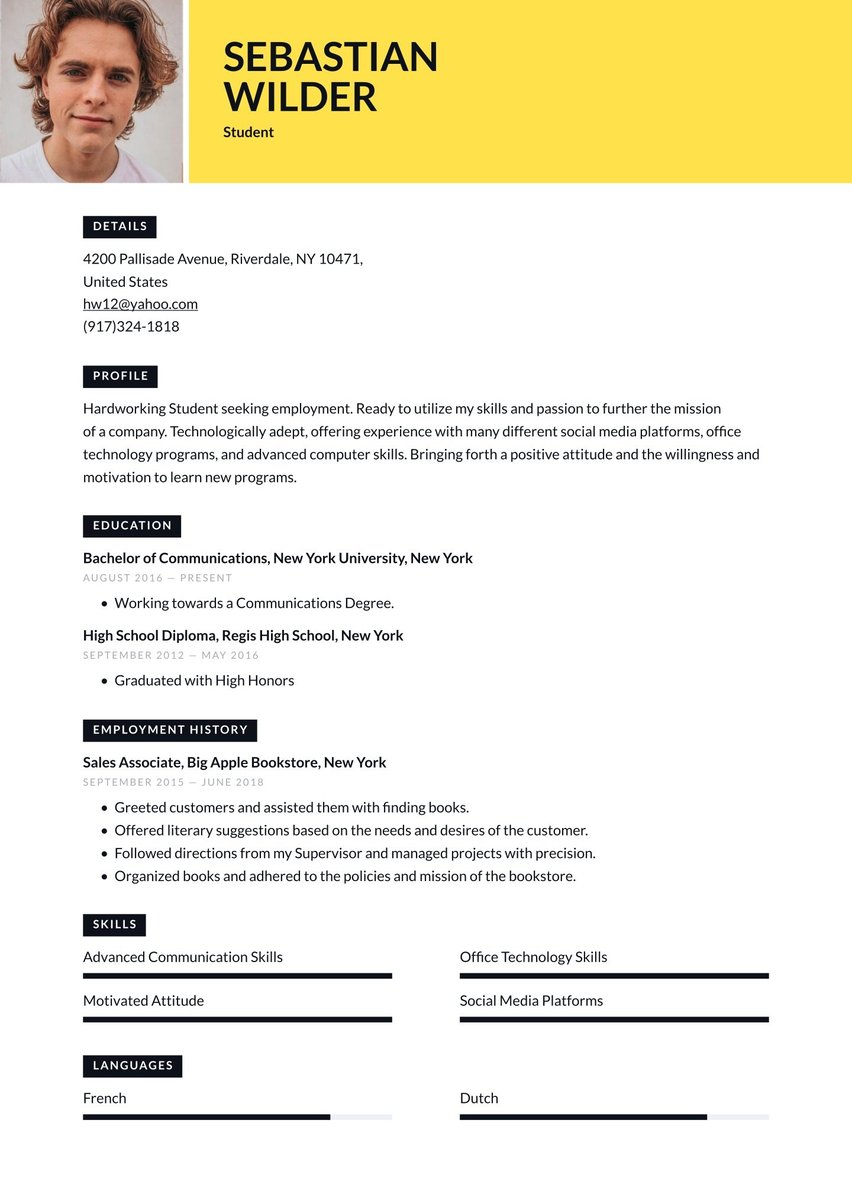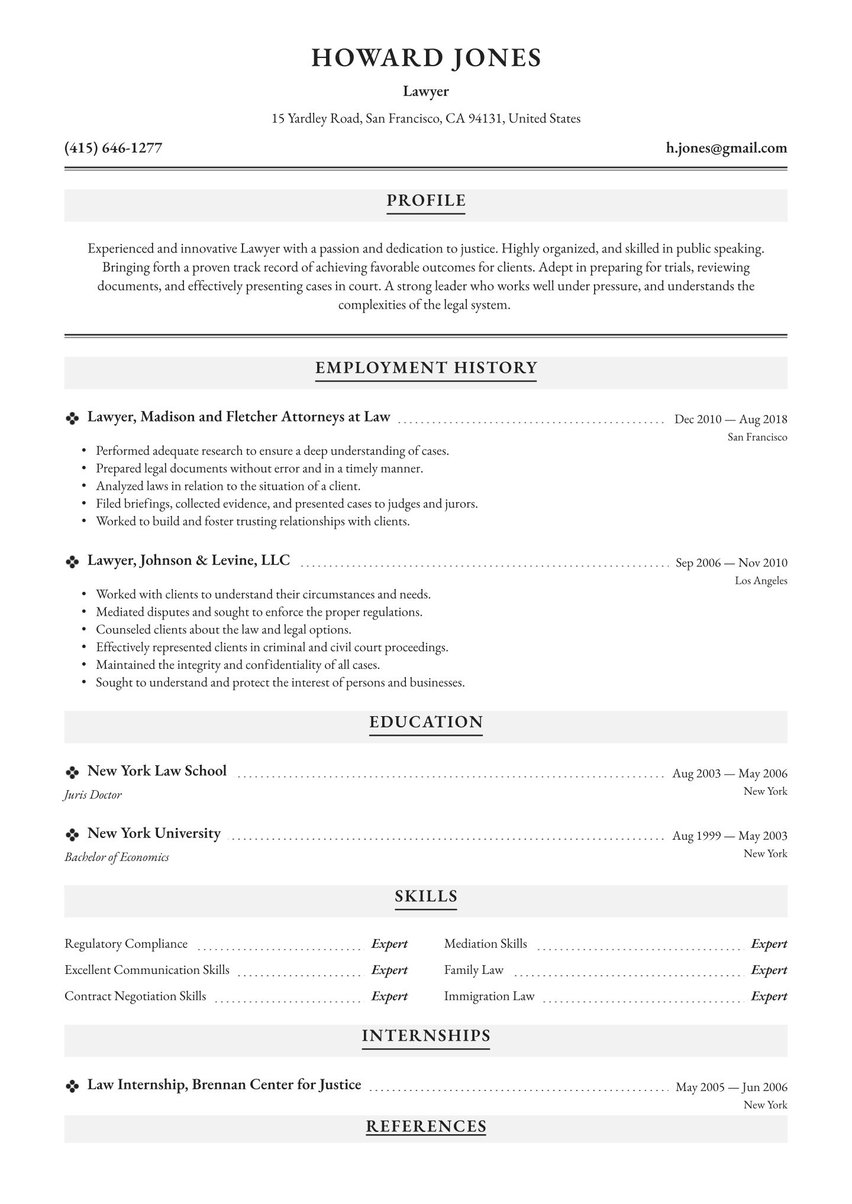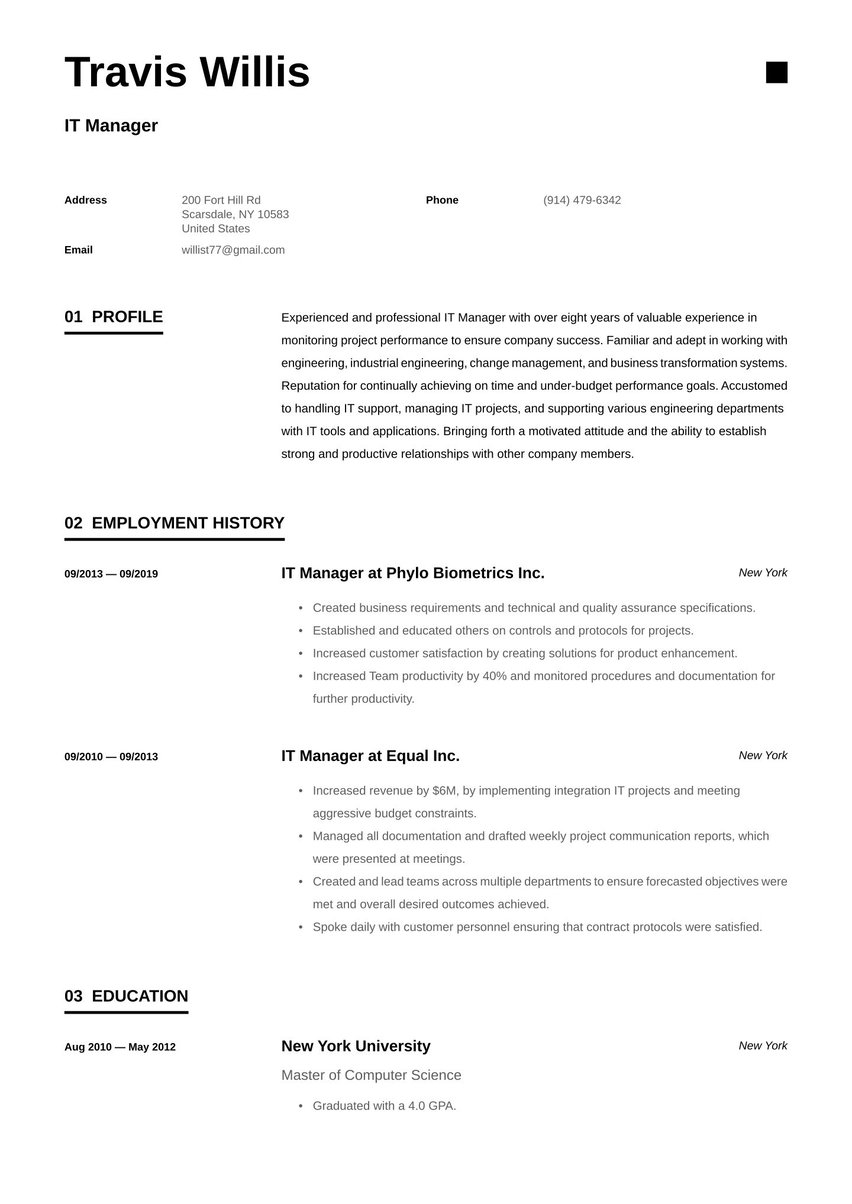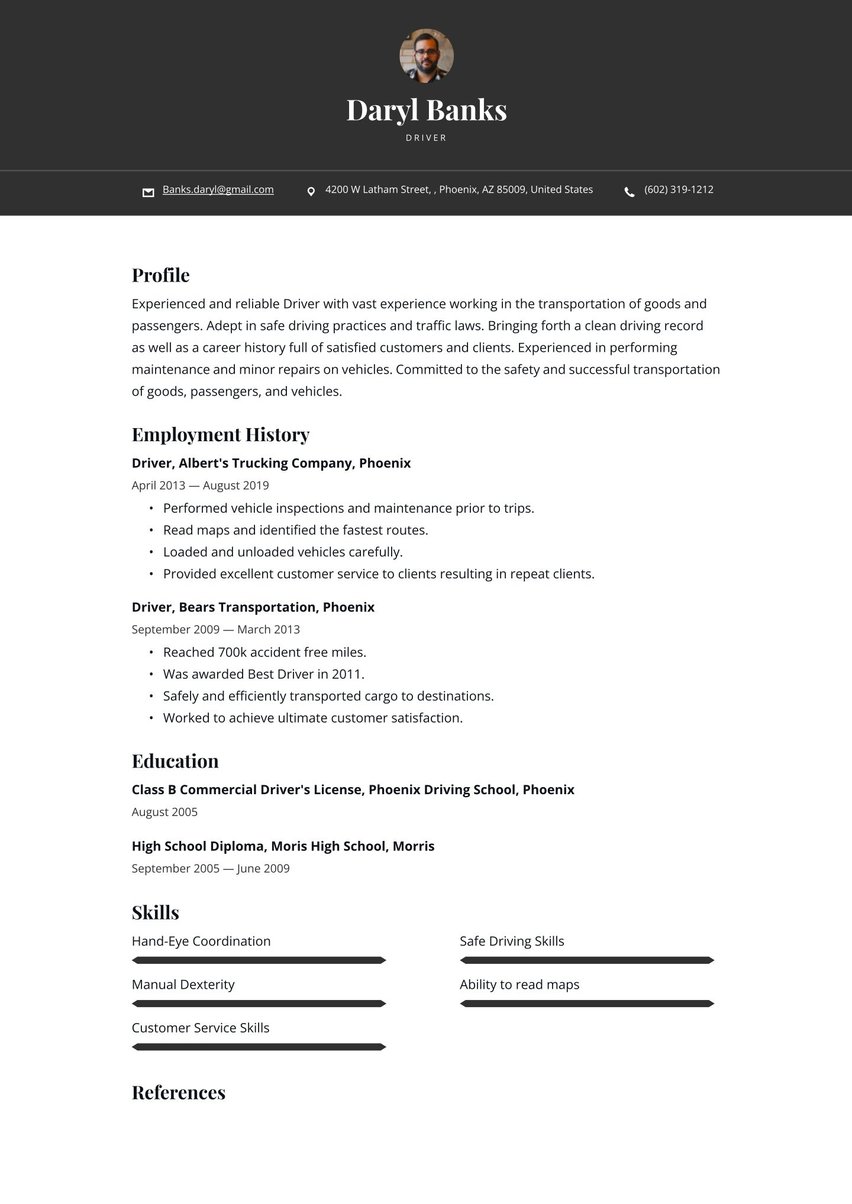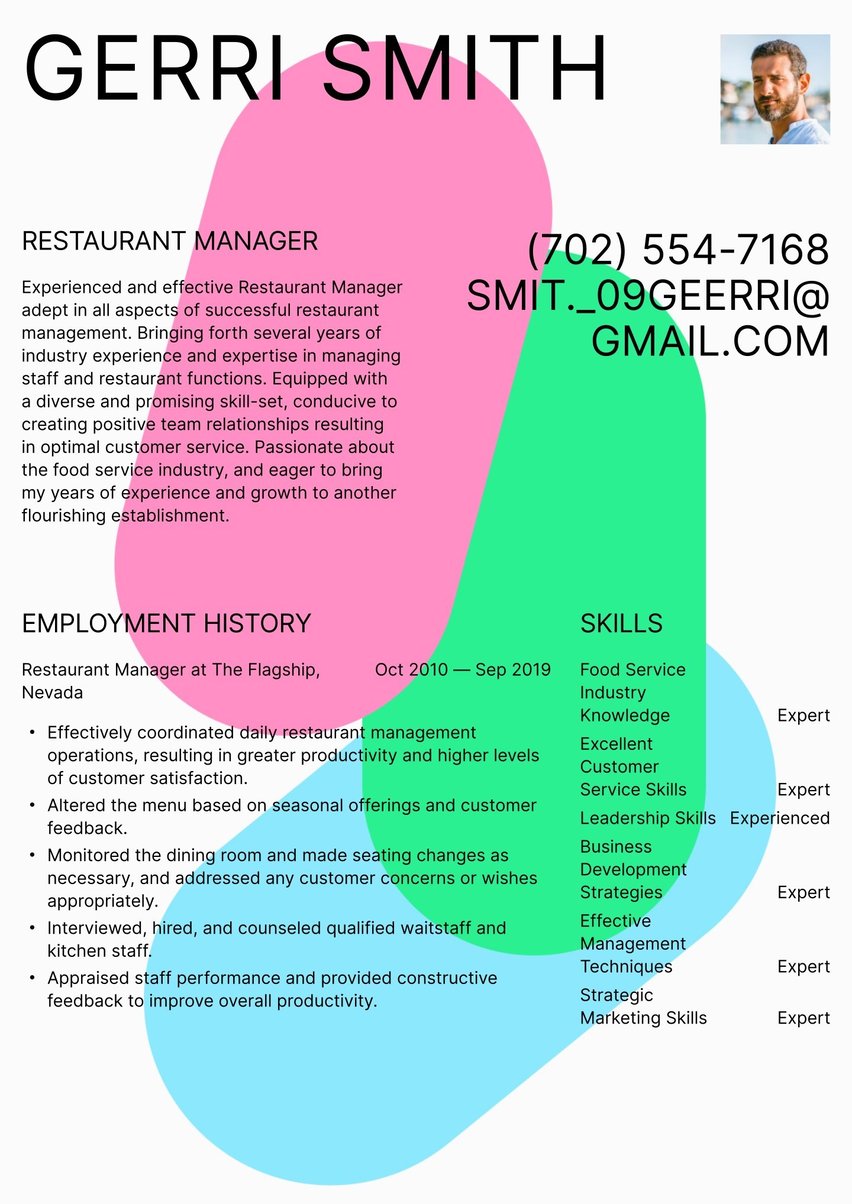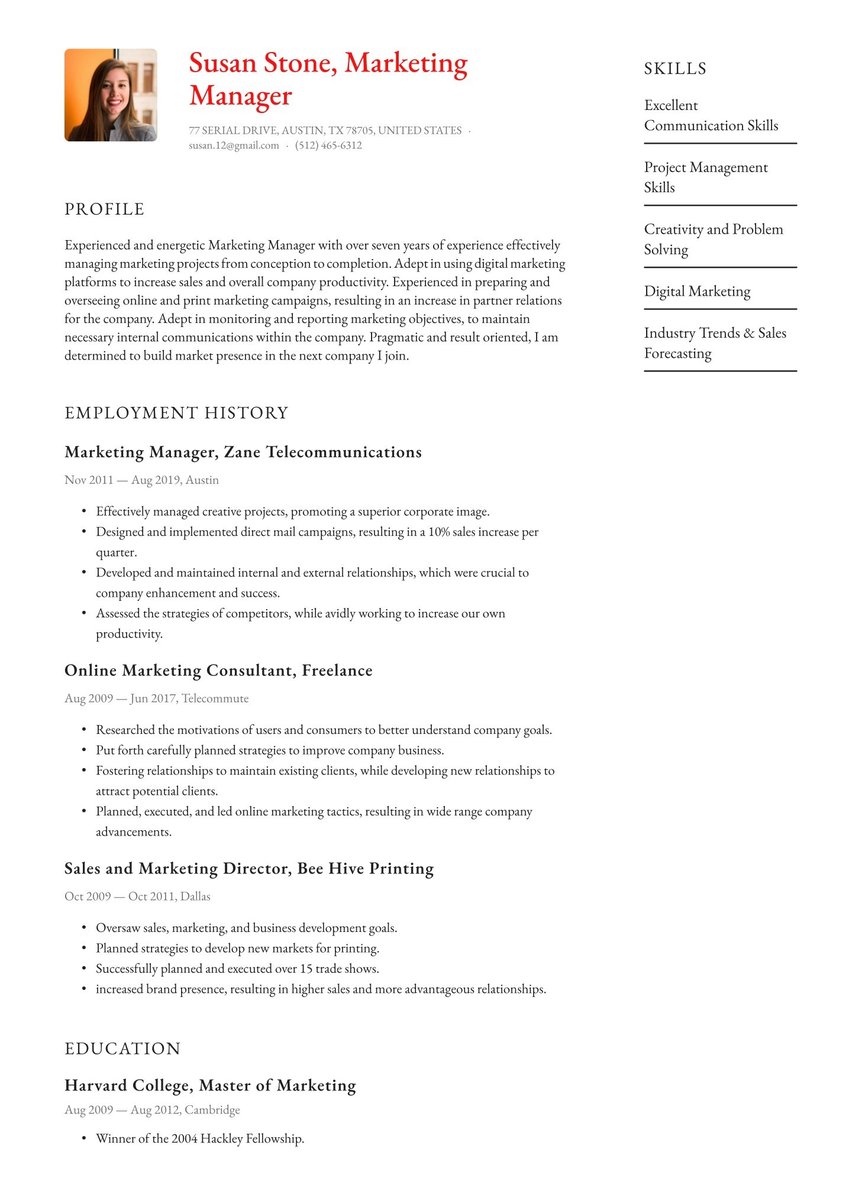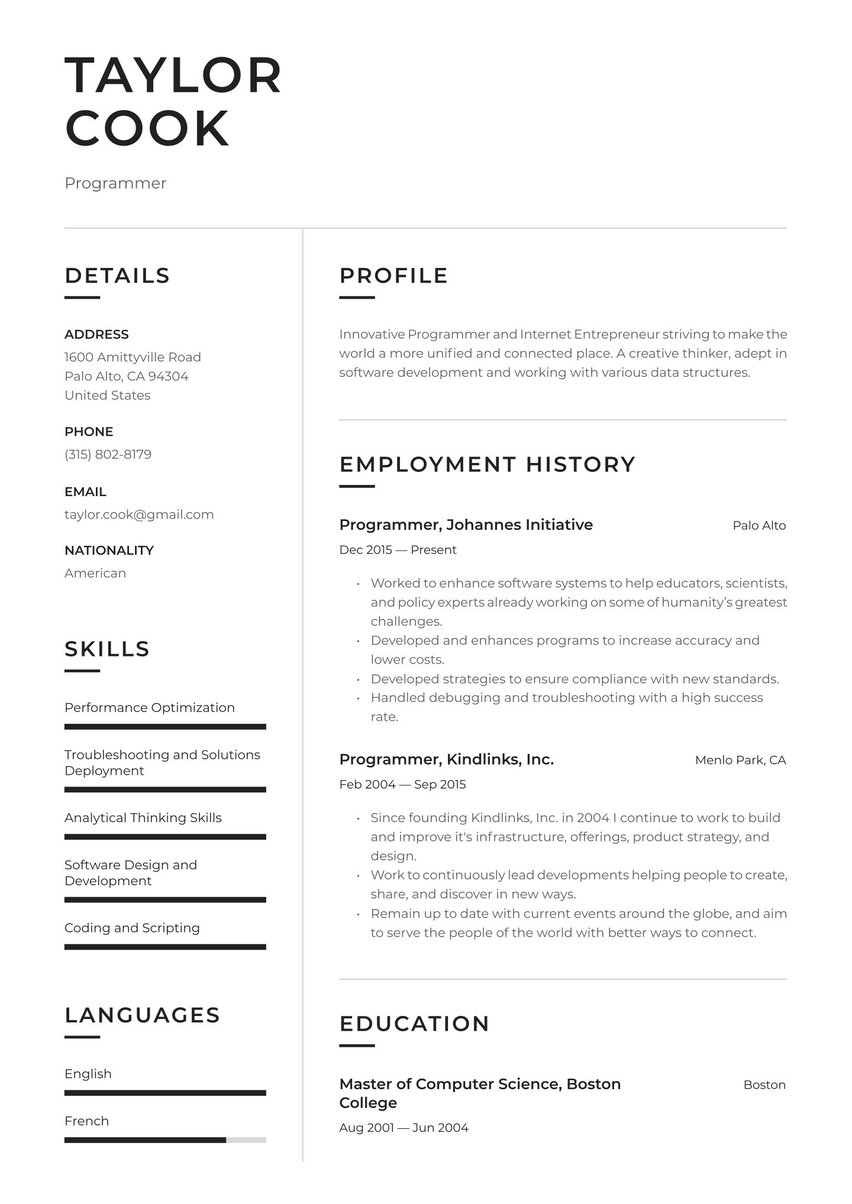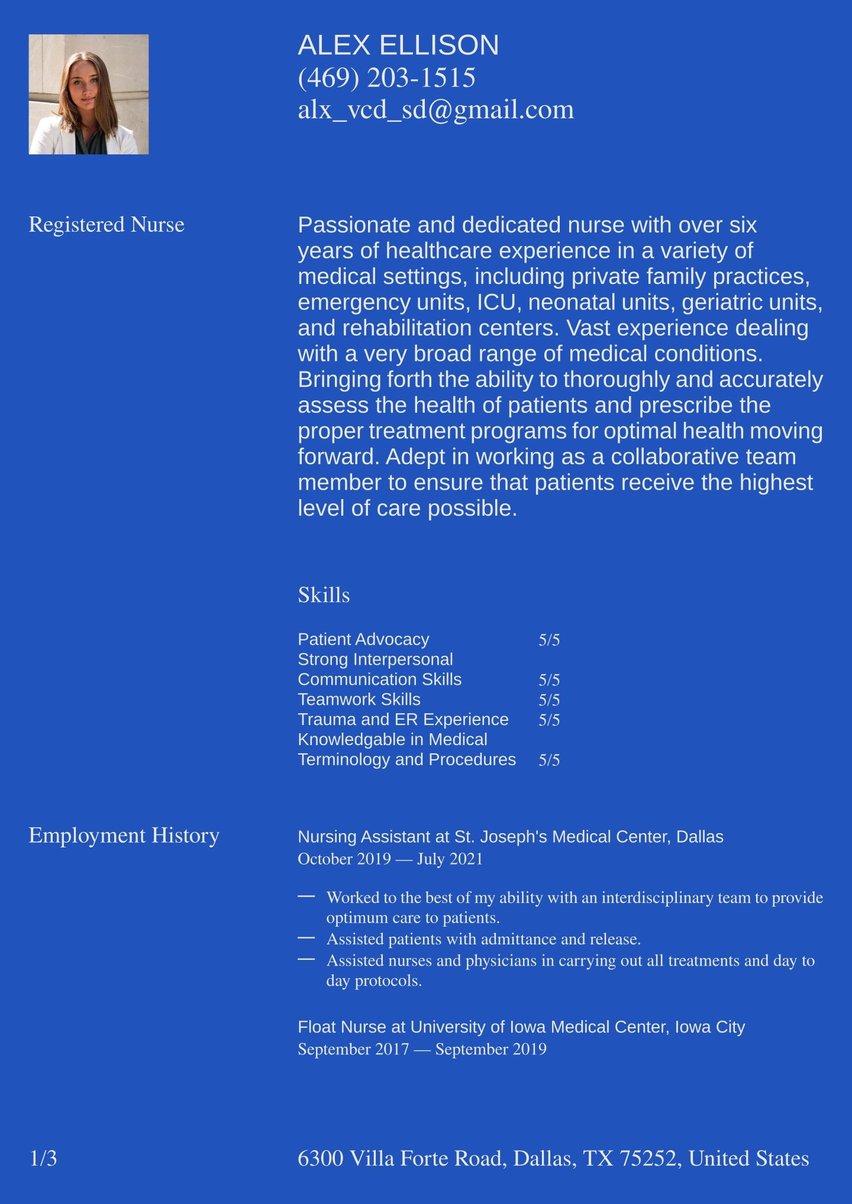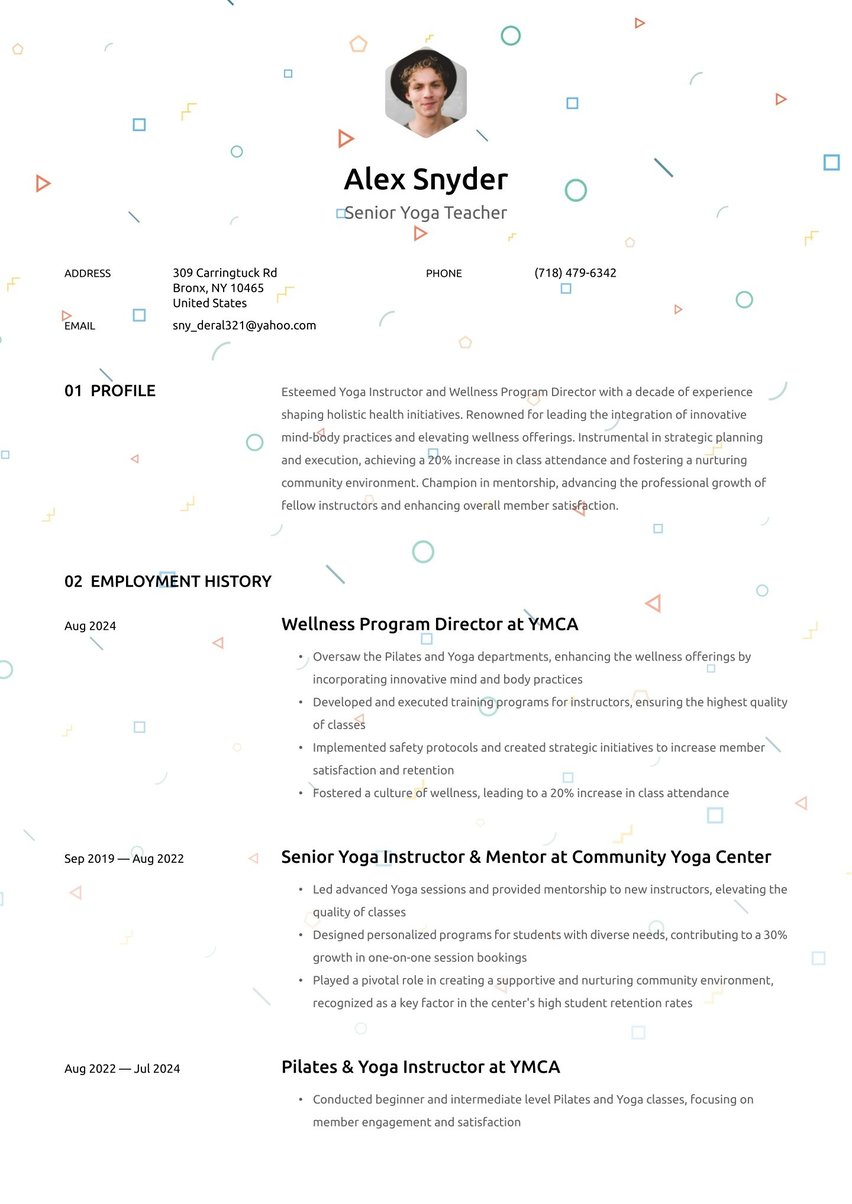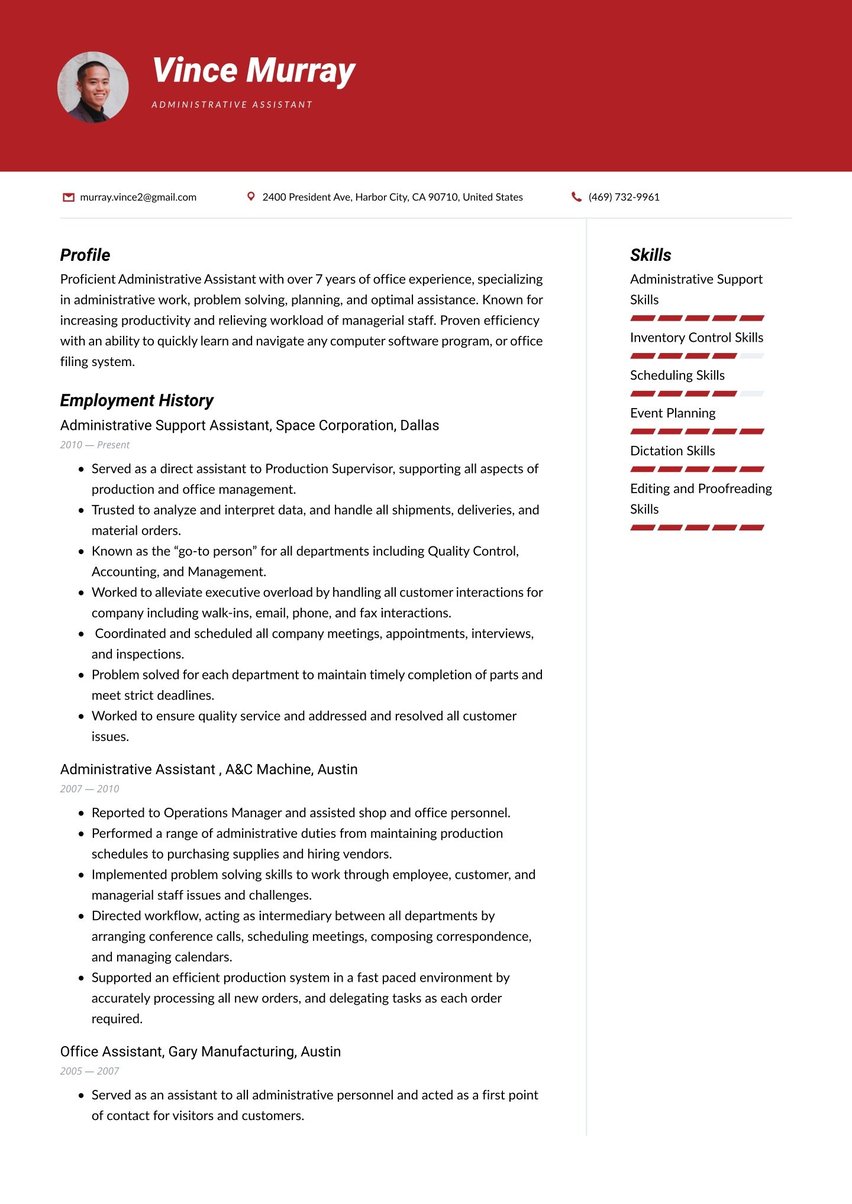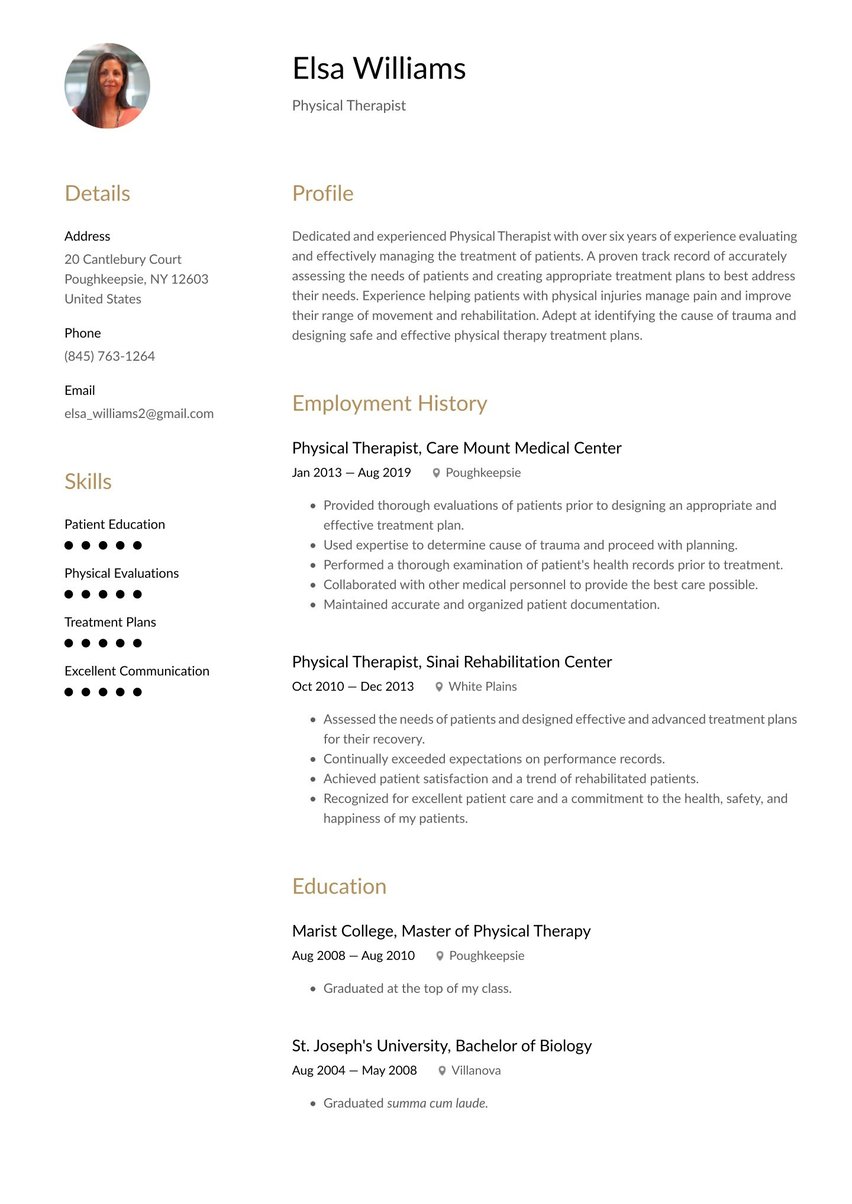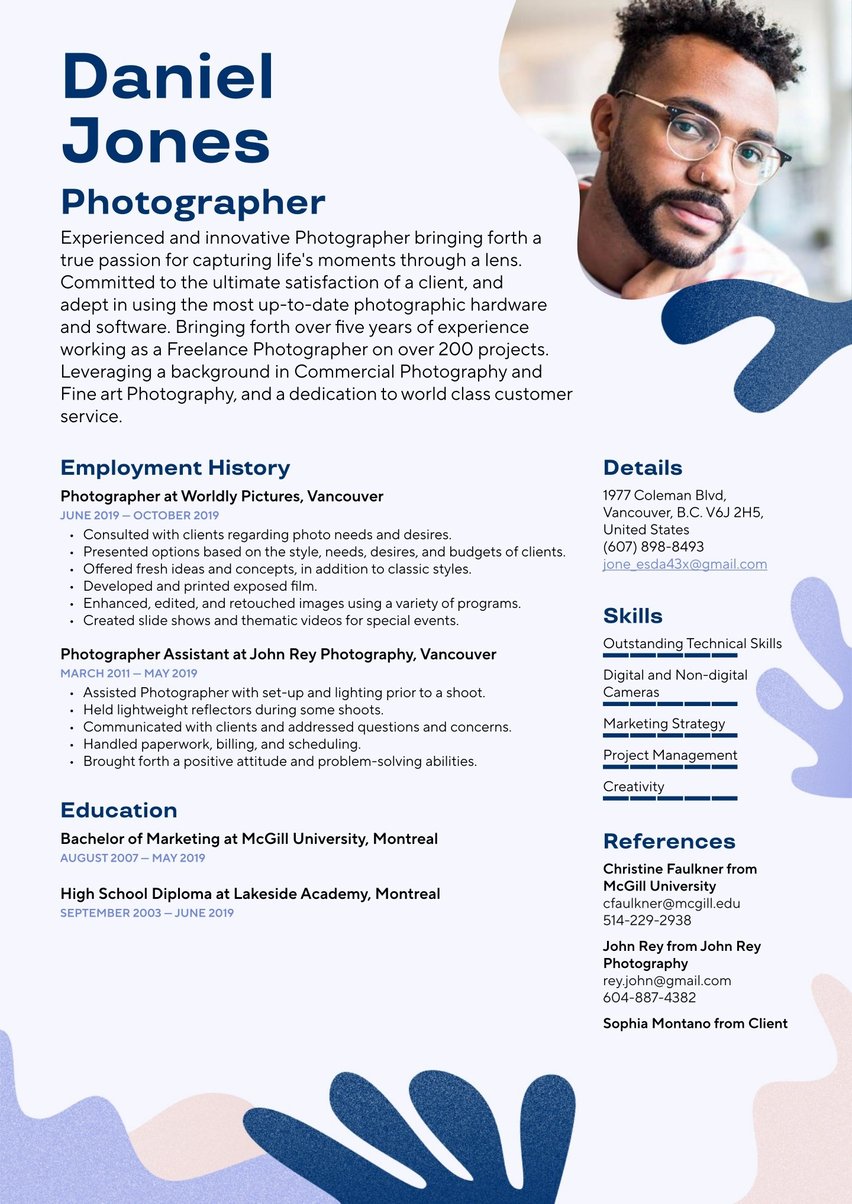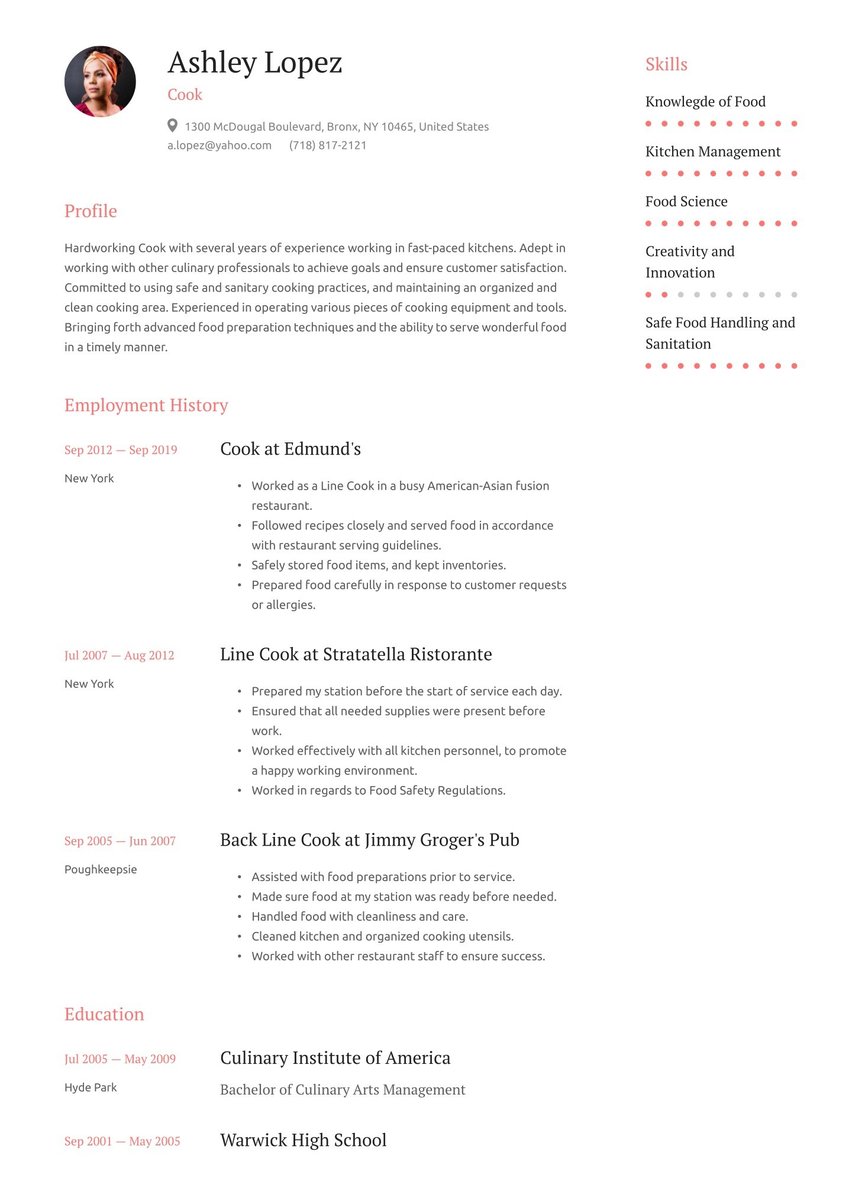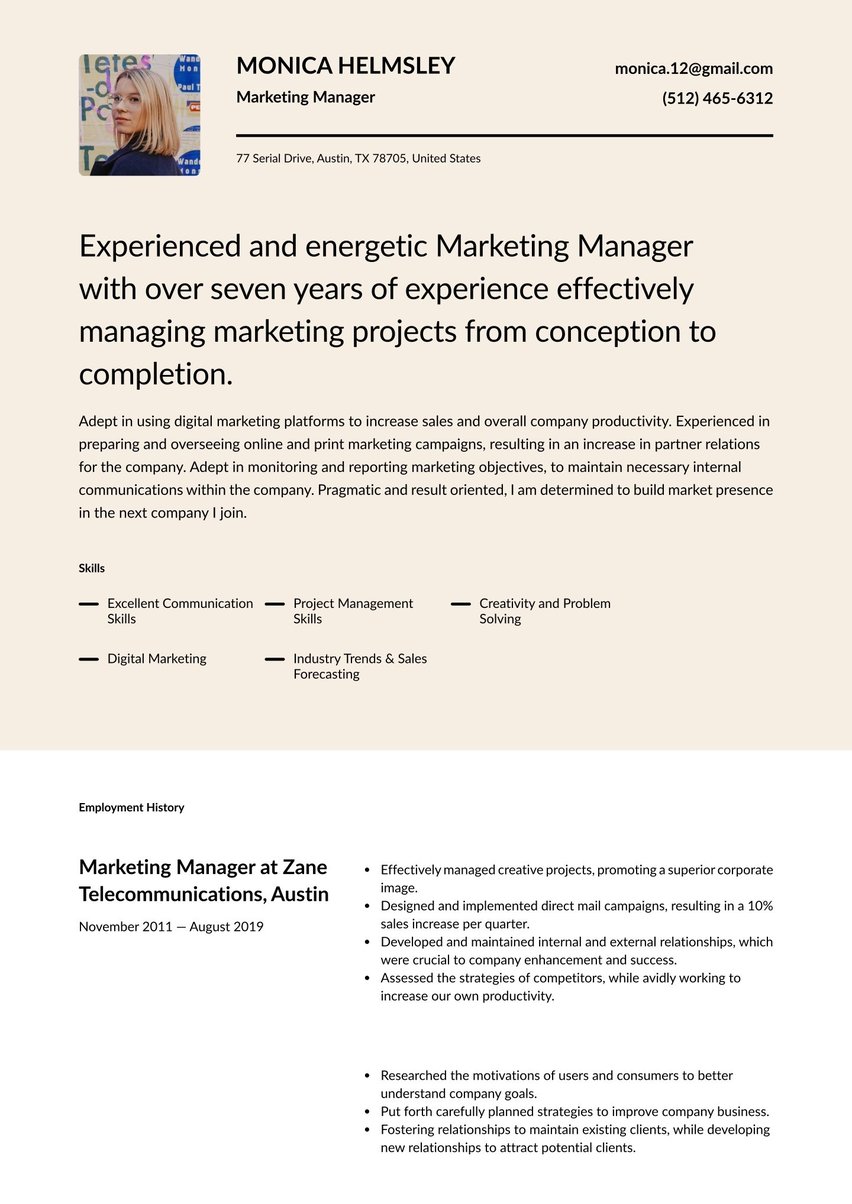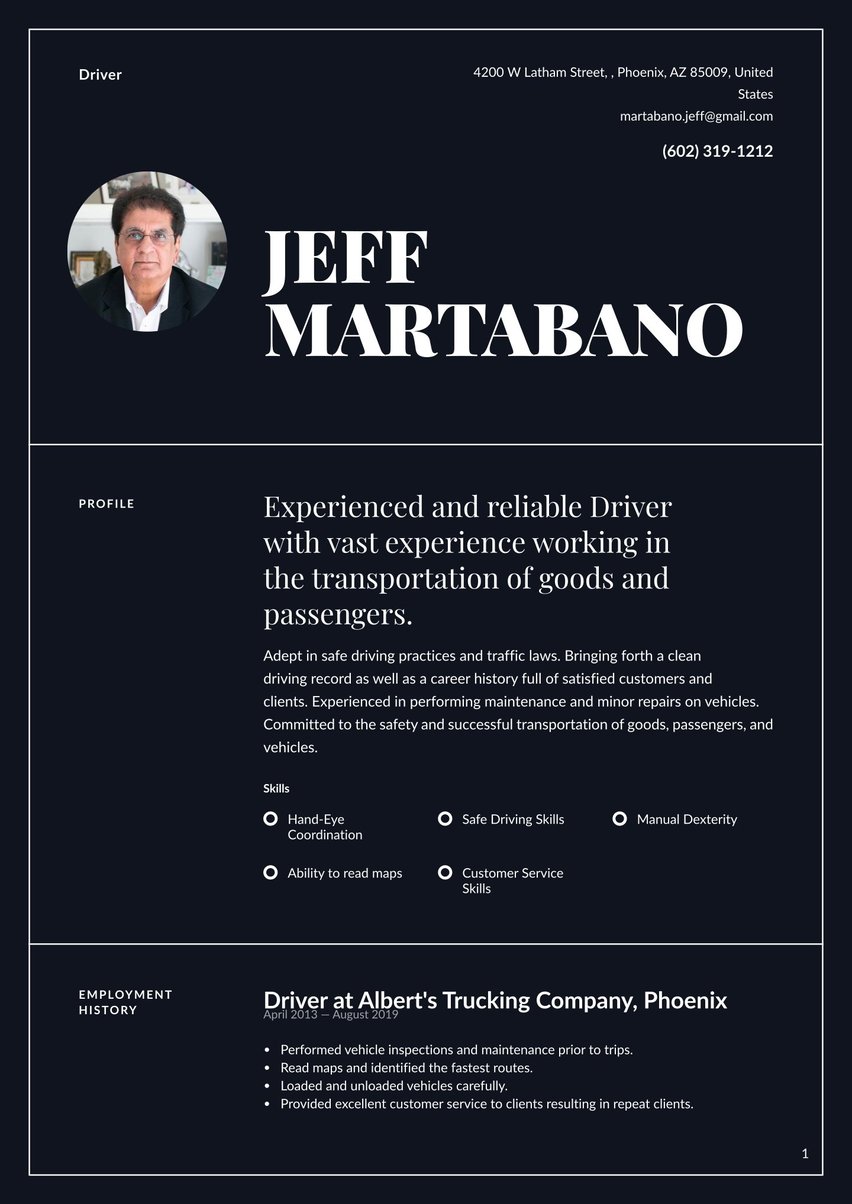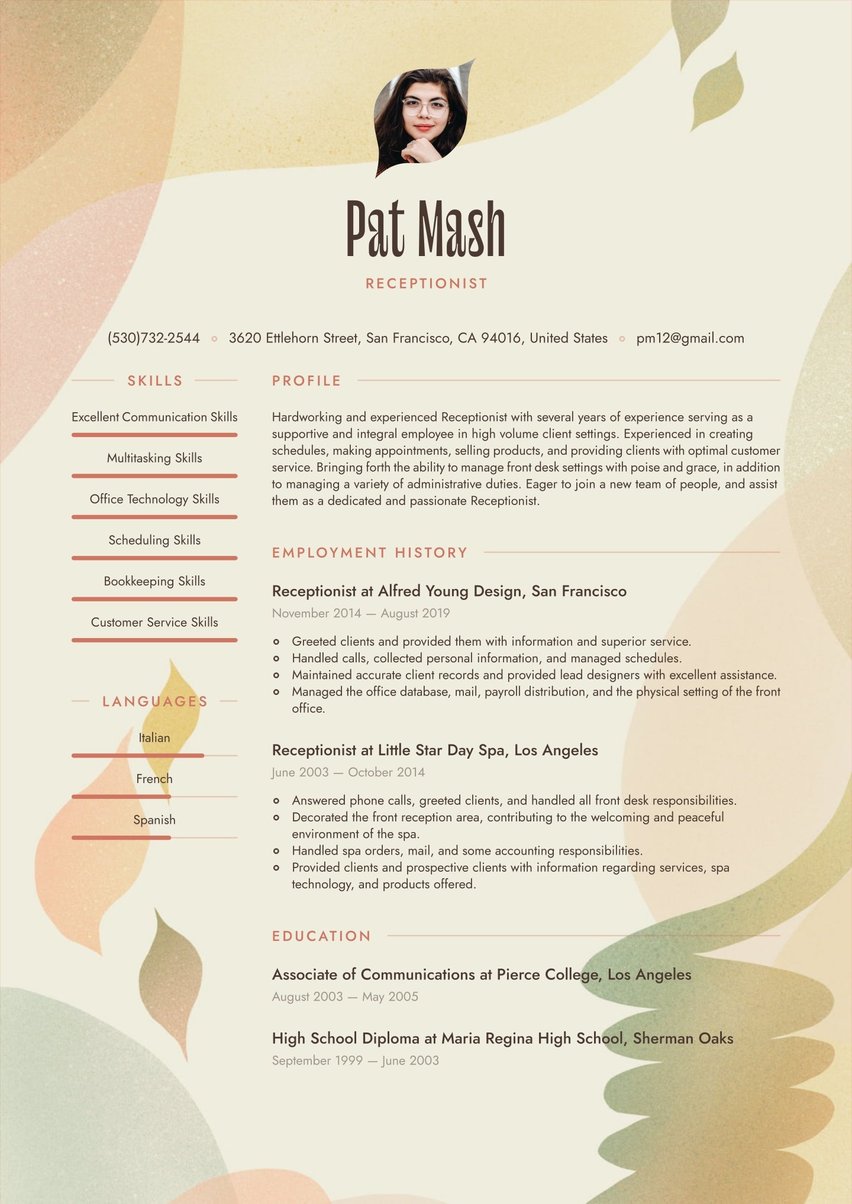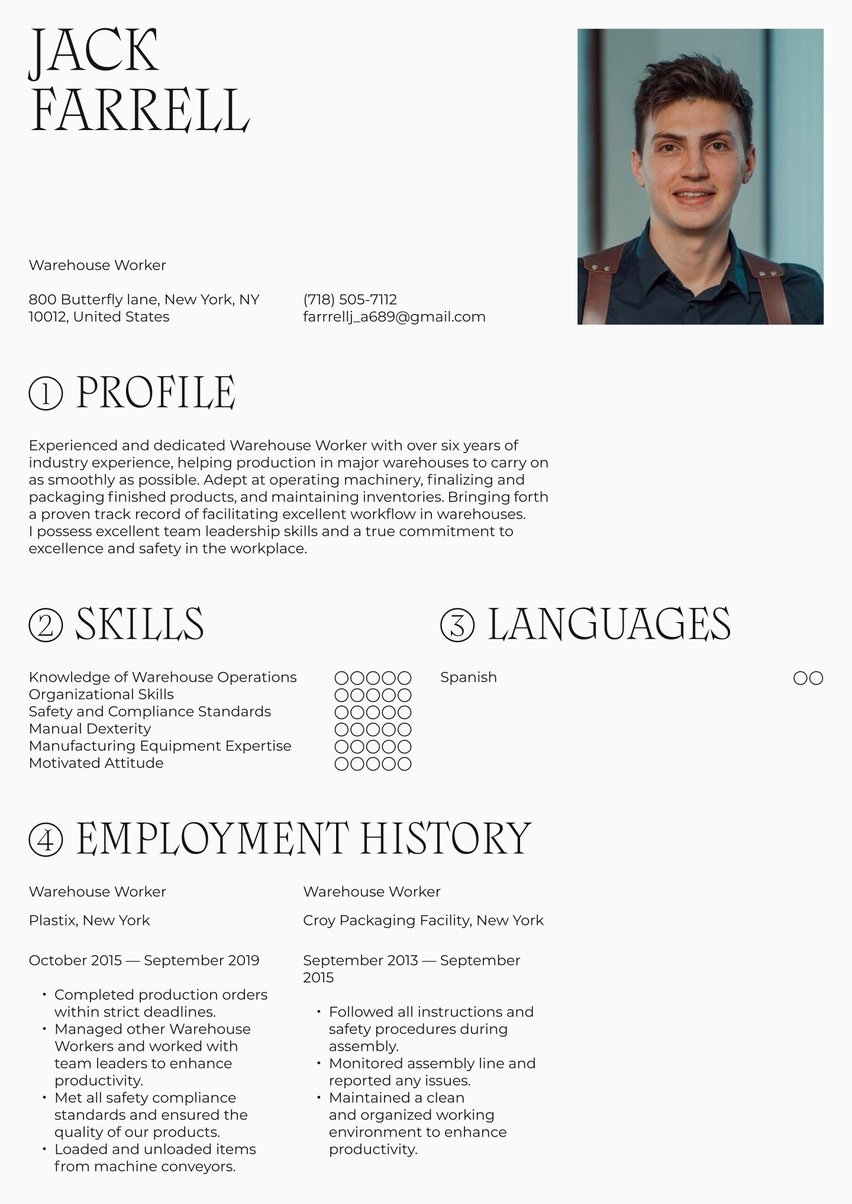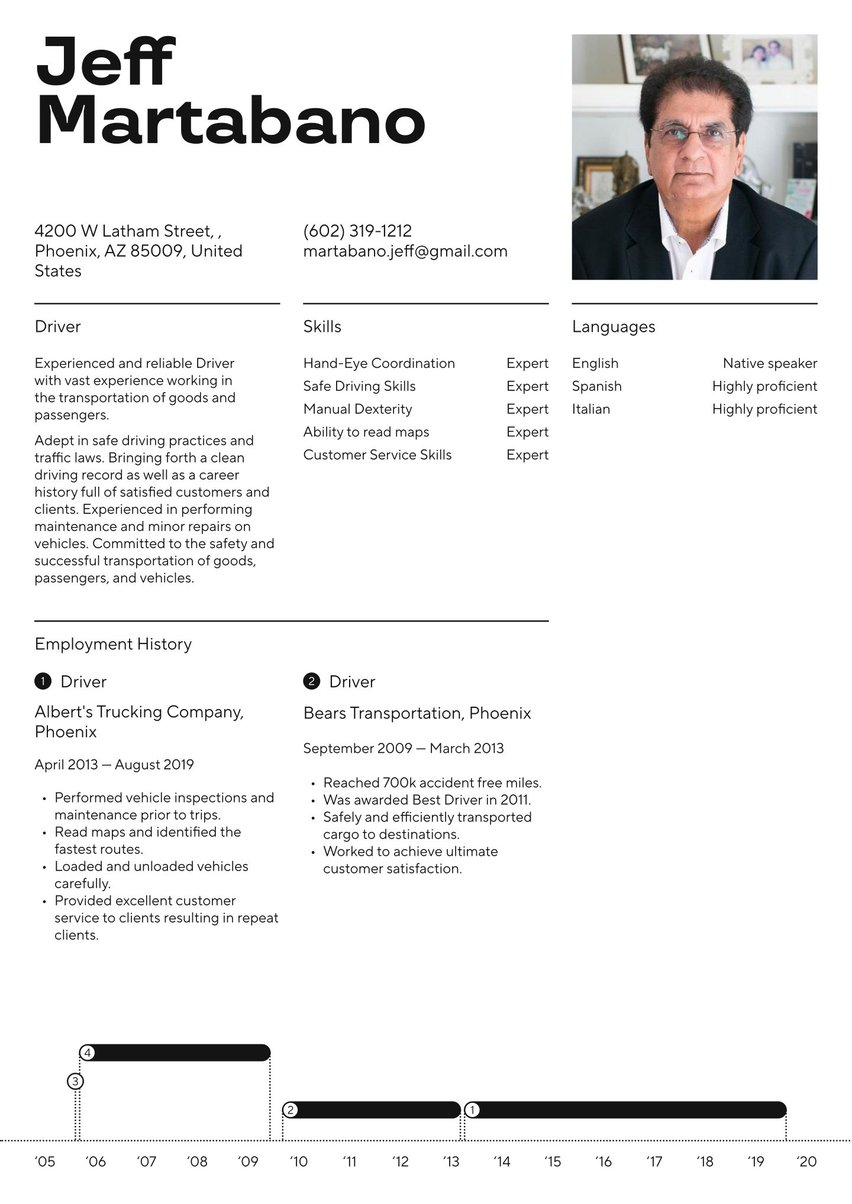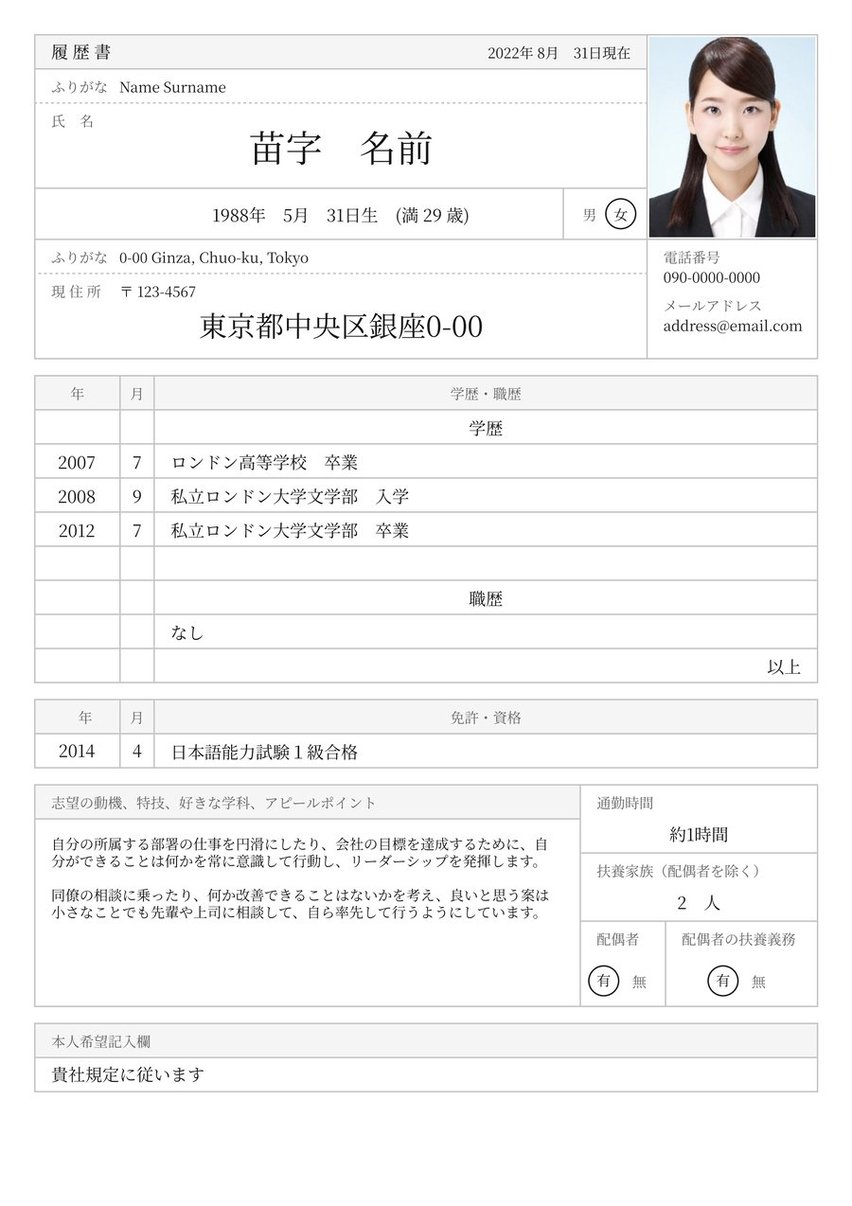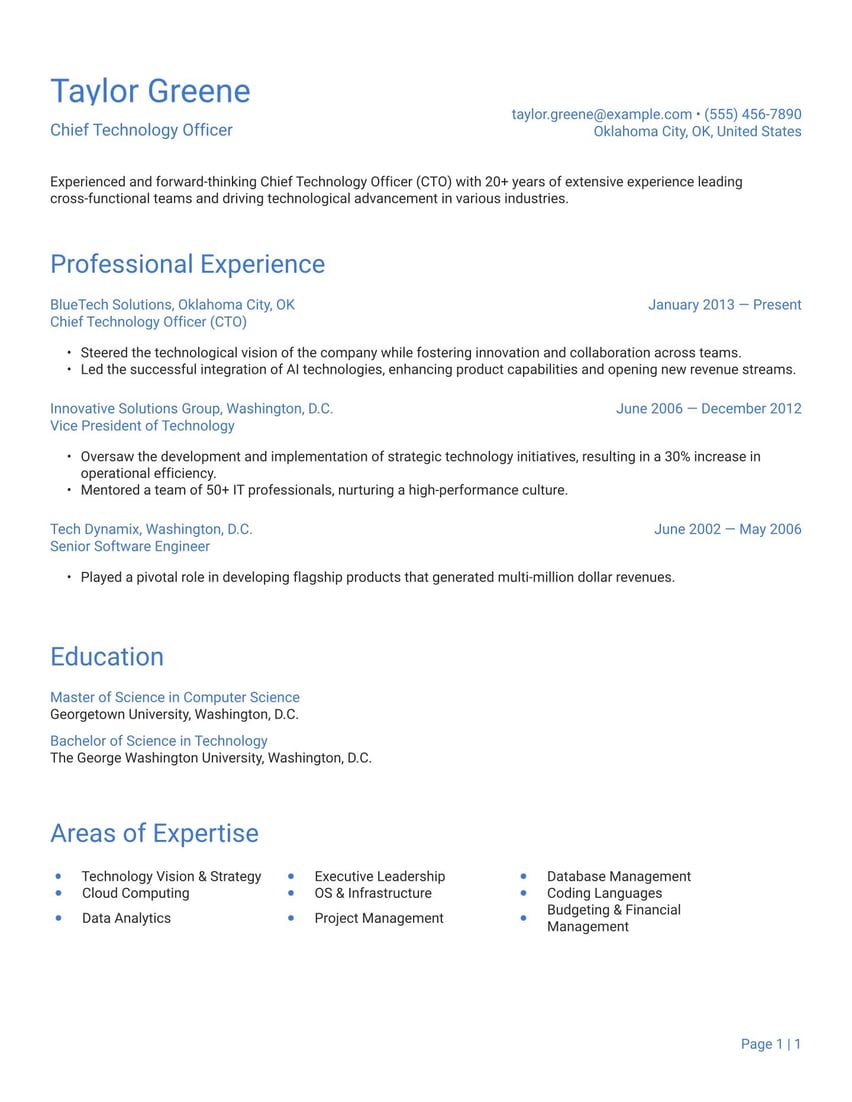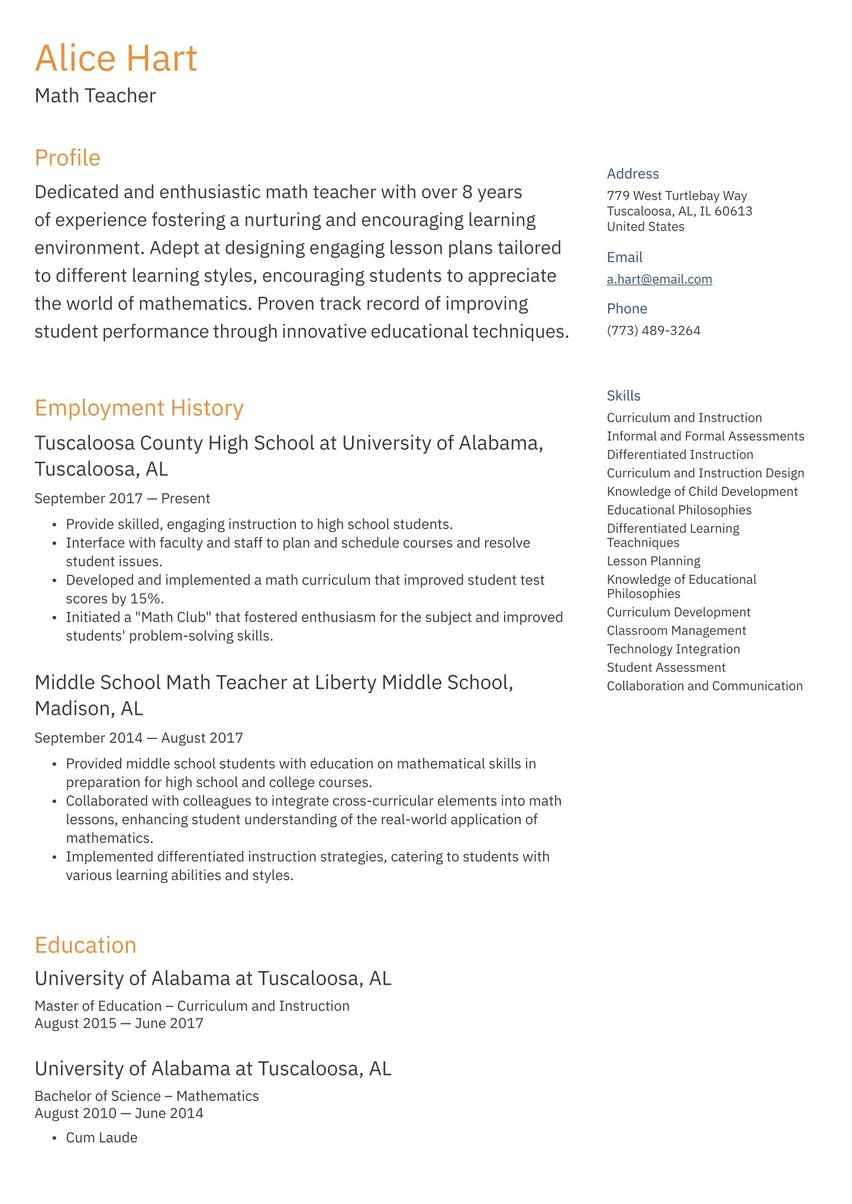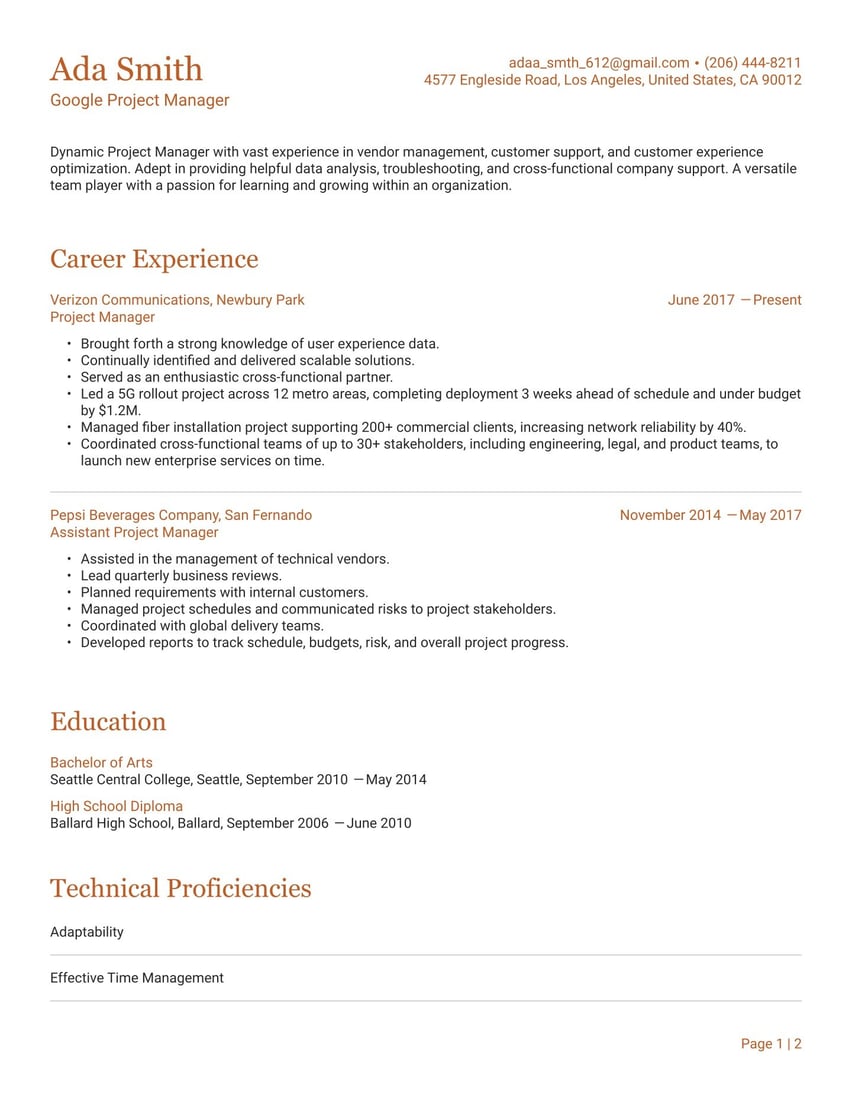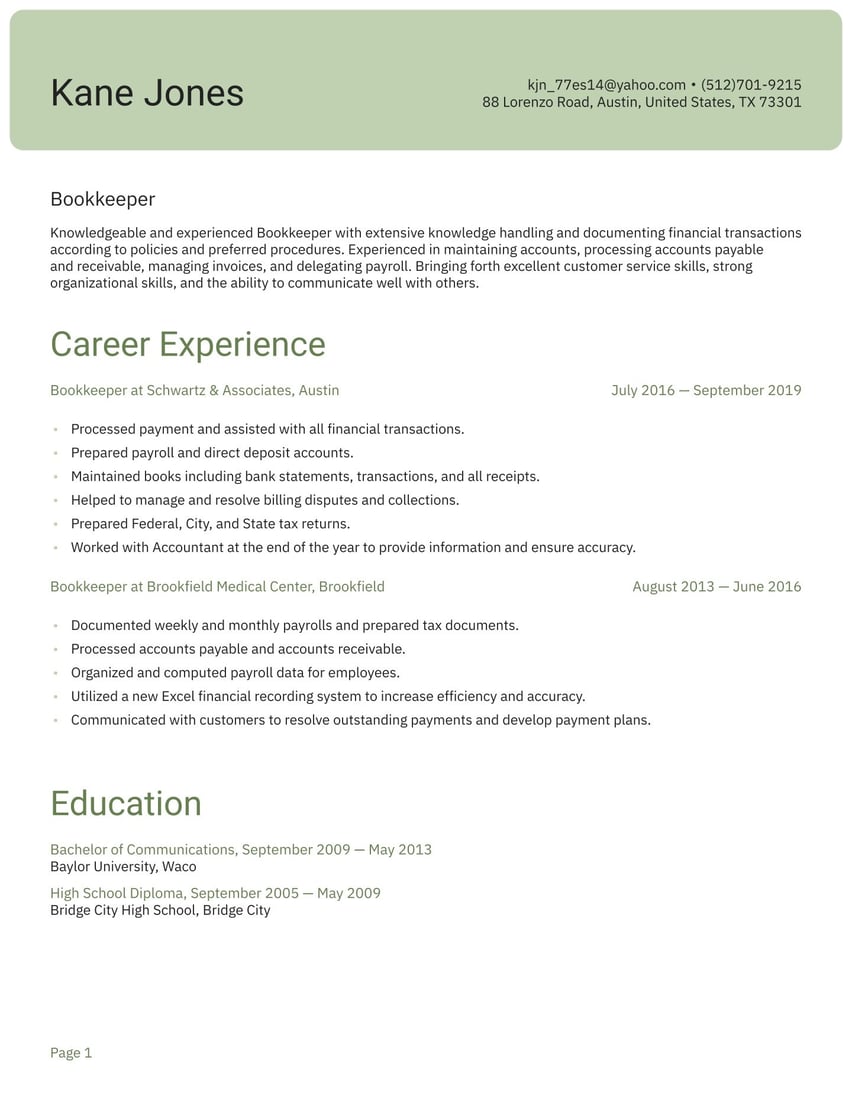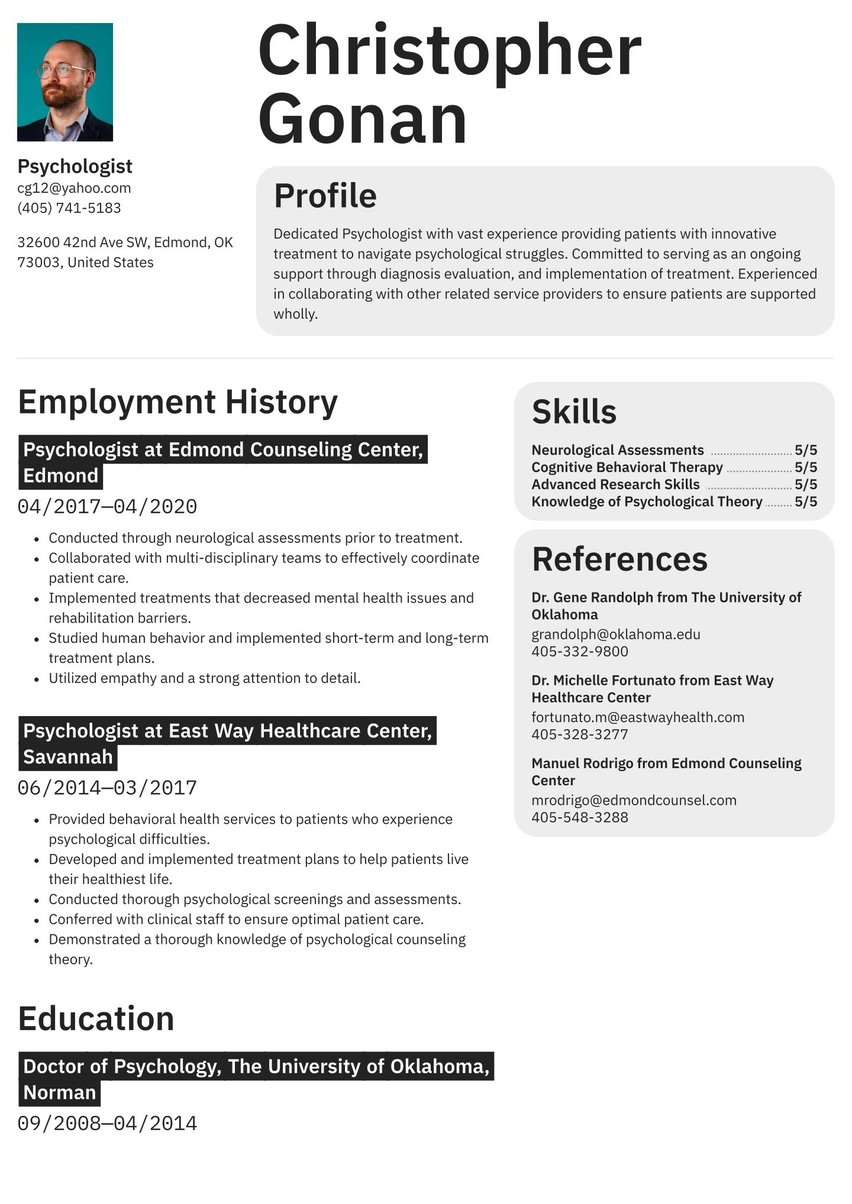04/2012 - 09/2019, Musician, The Shaker's Band, New York
- Played as a lead guitarist and songwriter for six years.
- Practiced guitar daily and trained with finger strengthening exercises.
- Helped to find, plan, and organize gigs.
- Communicated with clients regarding their needs for events.
- Planned and scheduled band meetings and took notes on important matters.
- Worked to nurture a strong morale among band members, and utilized excellent collaboration skills.
05/2009 - 07/2014, Production Manager, Lennon's Recording Studio, New York
- Assisted clients with all things production related, and guided them through the recording process.
- Controlled and monitored sound reinforcement, electronic instruments, and amplifiers.
- Worked to ensure that studio clients were satisfied with their recording results.
08/2005 - 05/2009, Bachelor of Music in Theory, Hunter College, New York
09/2001 - 05/2005, High School Diploma, West Hills High School, West Hills
- Music Performance Skills
- Music Composition Skills
- Advanced Communication Skills
- Music Technology Skills
- Adaptability
- Live Production Skills
- Detail Oriented
Musicians have recently experienced a big shift in the ways they are able to perform live and even get together with other musicians to play, putting a serious crimp in their livelihoods. The good news is that musicians like you are using your creativity to make a living. And there are many ways to keep your profession in tune, starting with a musician resume that sings.
You know how to engage an audience, and you’ll need to use that skill to amp up the interest in hiring you. With your talents and Resume.io’s layout templates and builder tool, you’ll be well on your way to that next gig.
Musician resume examples by experience level
Inside this guide, you will find musician resume examples and expert advice to help you:
- Get your resume into the hands of human by overcoming the software systems designed to rank candidates
- Understand the purpose of each section of your resume
- Focus on the skills that will get you the most notice
- Create an eye-catching, but easy-to-read design with tips, hints and sample layouts
Read on, but also take some time to view our 300+ resume examples and writing guides for more ideas.
What does a musician do?
Obviously, musicians make music, but you know that making music encompasses a wide range of talents, skills and even career directions. You write, perform and record music, but you may also teach or tutor others. Your music may be played by your band, written as a soundtrack for a movie, TV show or video game, or be a commercial jingle. Your main goal is to entertain through music.
As a musician, you may be vagabonds who travel in touring bands in front of live audiences or you may work mostly in recording studios. You may play one or more instruments, sing or compose in any one of hundreds of genres. You might work as a solo artist or in a band, choir or orchestra. There is no single job description for a musician.
Understanding the job market
The market for musicians is expected to be mostly stagnant in the upcoming decade, but that doesn’t mean you don’t have options. You may have to cobble together several different jobs or be on the lookout at all times to make your living solely as a musician. But being a musician means more than just standing on a stage in front of an audience.
Your creative thinking will come in handy here, too, since there are dozens of jobs you qualify for with your musician’s talents. Some of them require a music degree, but many do not. With pluck and determination (and a great resume), you should be able to pursue your musical passion and pay the bills.
Musicians may work in a number of related fields. According to the Berklee School of Music, these are the top 10 careers in the music business:
- Music producer
- Recording engineer
- Session musician
- Artist manager
- Tour manager
- Music teacher
- Booking agent
- Music publicist
- Composer
- Music arranger
Choosing the best resume format for a musician
You’re in a creative field and your resume format should reflect that creativity – within reason. You don’t want to distract from the content of your musician resume by making your text difficult to read by, say, using a musical staff as the background. That’s not to say that you shouldn’t add a music note as a design flourish in your contact information, but musician resume layouts should follow the general guidelines for all resumes.
As you design, remember to ask yourself: What is the purpose of my musician resume? The answer, of course, is to get the gig! That means grabbing the attention of prospective employers without making them work to read your relevant information.
Check out resume.io’s creative resume templates for some customizable ideas.
Your portfolio
Your biggest selling point is your musician’s talent, so you will want to have a portfolio of your work ready for hiring managers to hear. Definitely link to your best work from your musician resume. Once again, your goal is to make it as easy as possible for a hiring manager to get all the information necessary to make a decision.
You should customize the samples you direct a hiring manager to so that they hear the music that best represents the type of work they need. That means updating the link on your musician resume for each gig.
How to write a musician resume
When writing your musician resume, you should follow a standard structure with the following sections:
- The resume summary (or profile)
- The employment history section
- The skills section
- The education section
Music uses a common language and structure so that everyone in the band knows what their role is and can easily understand the entire piece. Job hunting and resume writing also use a common language and structure.
Because you may be looking for many different types of jobs, think of each section as a module you can pop in and out to customize for each job listing.
Before you get the job, or even the audition, you have to convince the hiring manager to bring you in. Your resume, in combination with a winning cover letter and your portfolio, give you the chance to make your case.
Resume.io is a leading global provider of resume examples and writing guides for all professions. Review some of our additional guides for further inspiration:
Profile summary sample for a musician CV: Sing your own praises
Your resume profile, or summary, gives you five lines to let loose with a little improvisation. It is here that you let hiring managers know who you are, your process and how you approach music and working in sync with other musicians.
Without stepping over the boundary into bragging, you should highlight your proudest achievements as a musician. This is a great place to tailor your resume for each different type of opportunity. Choose an anecdote or achievement that shows off the talents that best conform to the job listing.
This may not be the first section a recruiter will read, but it may make this difference between getting the interview or ending up in the circular file since it offers a glimpse of you as a professional person.
Here are median salaries for musicians, according to Payscale:
- Music composer: $50,088
- Music producer: $50,944
- Guitarist: $57,000
- Singer: $40,958
- Pianist: $35,375
Leap the Applicant Tracking System hurdle
The best advice we can give is to get past the Applicant Tracking System (ATS) by customizing your musician resume.
ATS software is used by most companies to sort and scan resumes. In addition to inputting your data into the human resources system, the ATS ranks your resume by scanning for keywords and phrases pegged to the job. Although there’s no absolute way to ensure you will rank high enough to beat the ATS, you can increase your chances greatly by following a few simple steps.
First, analyze the job listing and note any skills and requirements. Second, cross-reference those words and phrases with our resume. Make sure any skills you have that are mentioned in the listing are also in your resume. Use the exact phrasing when possible. Third, use both acronyms and the full names of organization, certificates, etc., just to make sure the ATS catches them.
Don’t force in keywords where they don’t fit organically. Recruiters can tell if you are trying to “stuff” your musician resume to try to beat the ATS.
Below you will find an example of a musician resume profile.
Passionate and experienced musician with several years of experience in orchestra, band and theater performances. A skilled guitar and bass player, adept at writing and arranging music. Experienced in digital composition and recording processes. Bringing forth a self motivated attitude and a lifelong love and commitment to music.
Employment history example: In harmony with your next job
Depending on the structure of your career, this section may take on very different roles. If you have had a series of permanent jobs, then use a reverse chronological order format to describe each gig. If, however, you are a performing musician, the New England Conservatory recommends that you divide your experience into categories such as full roles, partial roles, festivals, etc. You do not need to list every performance, so go with your most prestigious and most recent. Also, remember to tailor which performances you choose to list based on the job you seek.
No matter which type of resume employment history is best for you, you should use strong, descriptive language to explain your role and how each job enhanced your skills.
Below is one type of musician resume example for an employment history section:
- Played as a lead guitarist and songwriter for six years.
- Practiced guitar daily and trained with finger strengthening exercises.
- Helped to find, plan and organize gigs.
- Communicated with clients regarding their needs for events.
- Planned and scheduled band meetings and took notes on important matters.
- Worked to nurture a strong morale among band members and utilized excellent collaboration skills.
Skills section sample: getting in tune
Your skills section gives an overview of your talents and abilities. All jobs require a blend of hard skills, or the specific learned skills you need to be an excellent musician, and soft skills, or the organization and interpersonal skills you need to function in a workplace and with other people.
This section is a courtesy for hiring managers: It gives them a quick way to see whether your skills match the job description, so make sure they do! Limit yourself to 5-10 of your top matching skills.
Soft skills to consider:
Excellent communication skills, a motivated attitude, confidence, reliability, teamwork and concentration
Hard skills to consider:
Songwriting, knowledge of music theory, any instruments you play and knowledge of scales
How do you decide?
First, you make a “master list” of all your skills. Every single one. Even if you think it’s obvious. Sure, almost everyone knows how to use Microsoft Office products, but maybe that’s very important at a certain job and not everyone is an Excel expert. Plus, this exercise gets your memory flowing and will help you remember things you may want to go back and add to your employment history. The other benefit of a Master List is that you can hold onto it and add to it as your skills grow.
Then, go back to the job listing and check all the skills and attributes your prospective employer seeks. Remember the ATS. The more your skills match to the ones in the job listing, the more likely you will be to leap that hurdle.
Here’s a basic sample of a musician’s resume skill section you can adapt to your own abilities:
- Music Performance Skills
- Music Composition Skills
- Advanced Communication Skills
- Music Technology Skills
- Adaptability
- Live Production Skills
- Detail-oriented
- 2001-2005 Hunter College, Bachelor of Music in Theory, New York, NY
- 1997-2001 Oxford Academy, High School Diploma, Cypress, CA
Musician resume education section example: Your academic chops
Education sections in resumes vary in importance from musician to musician. Some people are mostly self-taught, some let their portfolio speak for themselves, so how much emphasis you want to place on this section will depend on what type of job you’re targeting. If it’s a very formal one or connected to academia, education may be more important than usual.
Not all musicians have formal training, but if you do, this is the place to list it. If you have taken music classes in high school and you are just beginning your career, definitely put those classes in. Any type of music certification should also be named in this section.
A musician resume may include sections not typical of other careers. Here are some sections to consider adding:
- Principal teachers
- Master classes
- Coaches
- Affiliations
- Conductors you have worked with
- 2001-2005 Hunter College, Bachelor of Music in Theory NY, NY
- 1997-2001 Oxford Academy, High School Diploma Cypress, CA
Key takeaways
- A musician resume should follow the standard format, although you can get a little more creative with your profile and design.
- Your career can take many paths, so make sure you tailor your resume for each one (and it’ll help you pass the ATS).
- Consider adding specialized sections as appropriate.
- Use Resume.io, the builder tool, and recruiter-tested free resume templates to create an impressive, expertly-designed and field-tested resume.


.jpg)

.jpg)

















